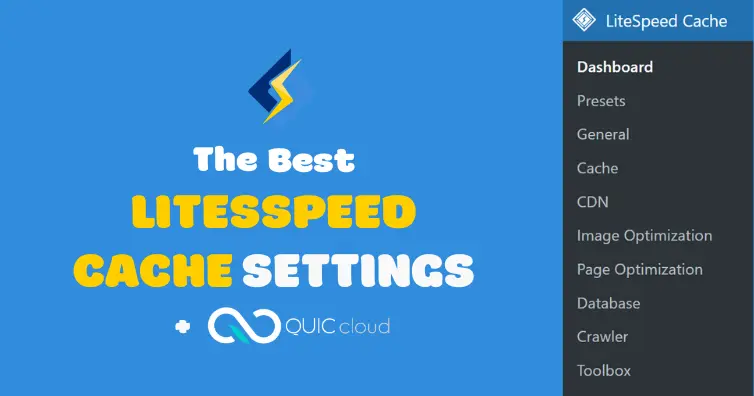
In this guide, we’re configuring LiteSpeed Cache + QUIC.cloud CDN.
The “best” settings are different for each site and you should really go through each one yourself and test your results. What that said, this guide is intended to be more of a baseline.
There’s no reason to use any other cache plugin since LiteSpeed Cache has excellent reviews, extensive settings, and uses faster server-level caching. It’s definitely the best free cache plugin.
We’ll also be setting up QUIC.cloud’s CDN which is built for LiteSpeed. But just a heads up, the free plan only uses 6 PoPs while the paid (standard) plan uses all 81 PoPs with DDoS protection.
If you’re not using a LiteSpeed host yet, I like NameHero for US-based sites and ChemiCloud. Both are similar with LiteSpeed, NVMe storage (faster than SATA SSDs), MariaDB (faster than MySQL), and cPanel. But ChemiCloud has more data centers and 9/11 of them use NVMe SSDs.
- ON – enable.
- OFF – disable.
- TEST / DEPENDS – test your results, or it depends on other settings.
- CONSUME RESOURCES – indicates the setting may consume more server resources which can lead to 5xx errors + CPU overages on shared hosting and less powerful servers.
| SG Optimizer | WP Rocket | LiteSpeed Cache | |
|---|---|---|---|
| Price | Free | $59/year | Free |
| Server-side caching | ✓ | x | ✓ |
| Object cache integration | ✓ | x | ✓ |
| Delay JavaScript | x | ✓ | ✓ |
| Remove unused CSS | x | Inline | Separate file |
| Critical CSS | x | ✓ | ✓ |
| Host third-party code locally | x | x | ✓ |
| Image compression | ✓ | x | via QUIC |
| WebP | ✓ | x | via QUIC |
| Image placeholders | x | x | LQIP via QUIC |
| Add missing image dimensions | x | ✓ | ✓ |
| Exclude viewport images from lazy load | By class/type | Helper plugin | Automatically |
| Lazy render HTML elements | x | x | ✓ |
| Preload links | x | ✓ | ✓ |
| First time visit optimization | x | x | Guest Mode |
| Control cache TTL | x | ✓ | ✓ |
| Control preloading | x | ✓ | ✓ |
| ESI (edge side includes) | x | x | ✓ |
| Gravatar cache | x | x | ✓ |
| Limit post revisions | Delete all | Delete all | Keep some |
| CDN | Google Cloud | StackPath | QUIC.cloud |
| CDN price | $14.99/mo | $7.99/mo | $.02-.08/GB |
| CDN locations | 176 | 73 | 81 (standard plan) |
| Full page caching | ✓ | x | ✓ |
| Smart routing | Anycast | x | Anycast |
| Load balancing | ✓ | x | ✓ |
| DDoS protection | x | x | ✓ |
| Bandwidth | Unmetered | Very limited | Usage-based |
| New features | Infrequent | Infrequent | Frequent |
| Facebook group | Join | Join | Join |
1. Dashboard
LiteSpeed’s Dashboard shows the status of optimized images, CDN usage, CSS, etc. Measuring your PageSpeed scores here is more accurate than third-party browser tools such as GTmetrix.
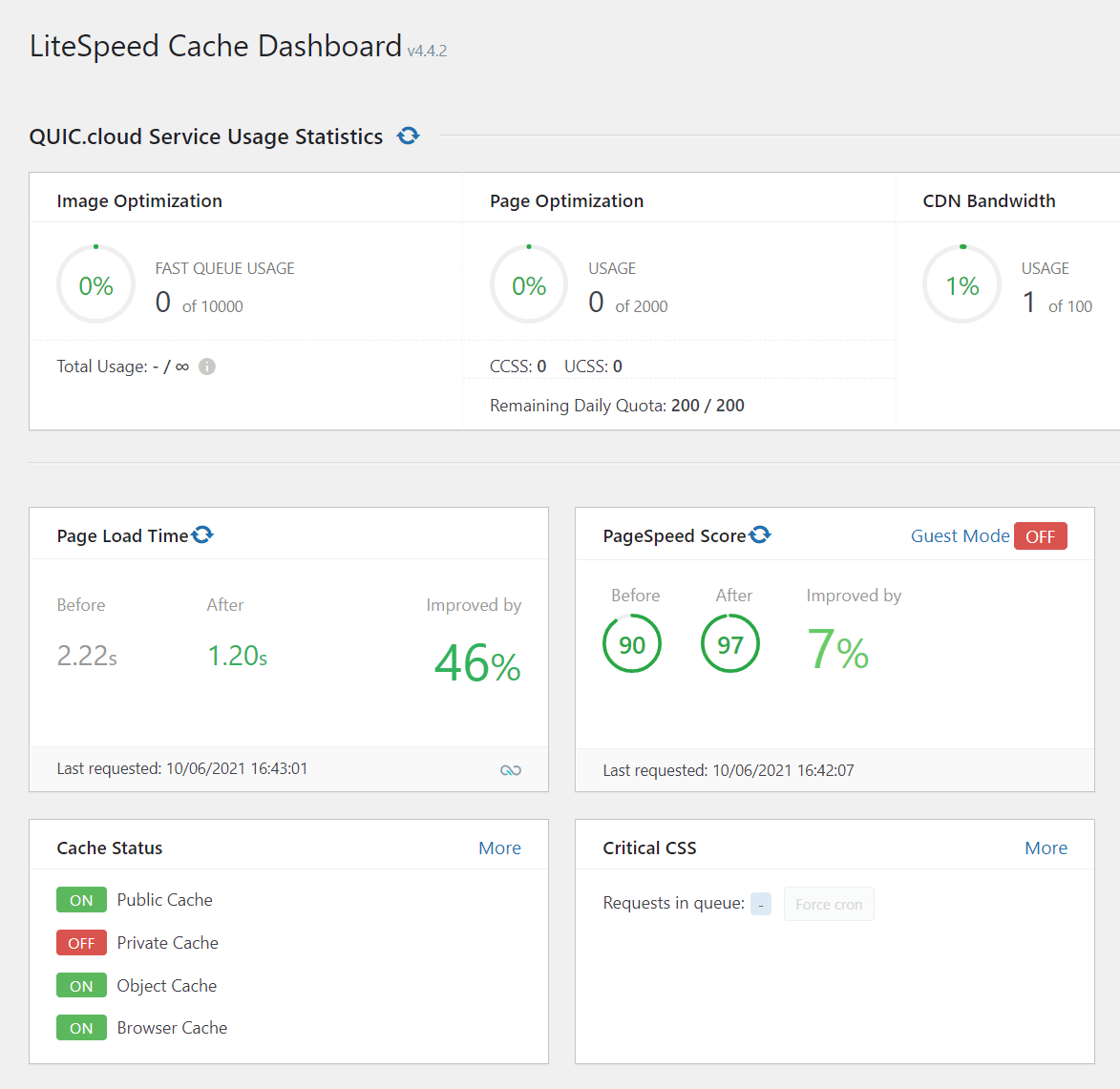
2. General
- Automatically Upgrade – ON – likely maintained well enough to do this.
- Domain Key – request a domain key and add it here, then link to QUIC.cloud.
- Guest Mode – ON – improves load time for first time visitors by saving time reading cookies, looking for cache varies, and processing ESI. You can read more about Guest Mode + Guest Optimization here, but it has great feedback in Facebook Groups. This setting can consume resources if crawling is on and doesn’t work with Cloudflare APO.
- Guest Optimization – ON – aggressive page and image optimization for first time visits.
- Server IP – click “Check my public IP from DoAPI.us” and copy/paste your server IP here.
- Notifications – ON – turn on if you want notifications from LiteSpeed (i.e. new releases).
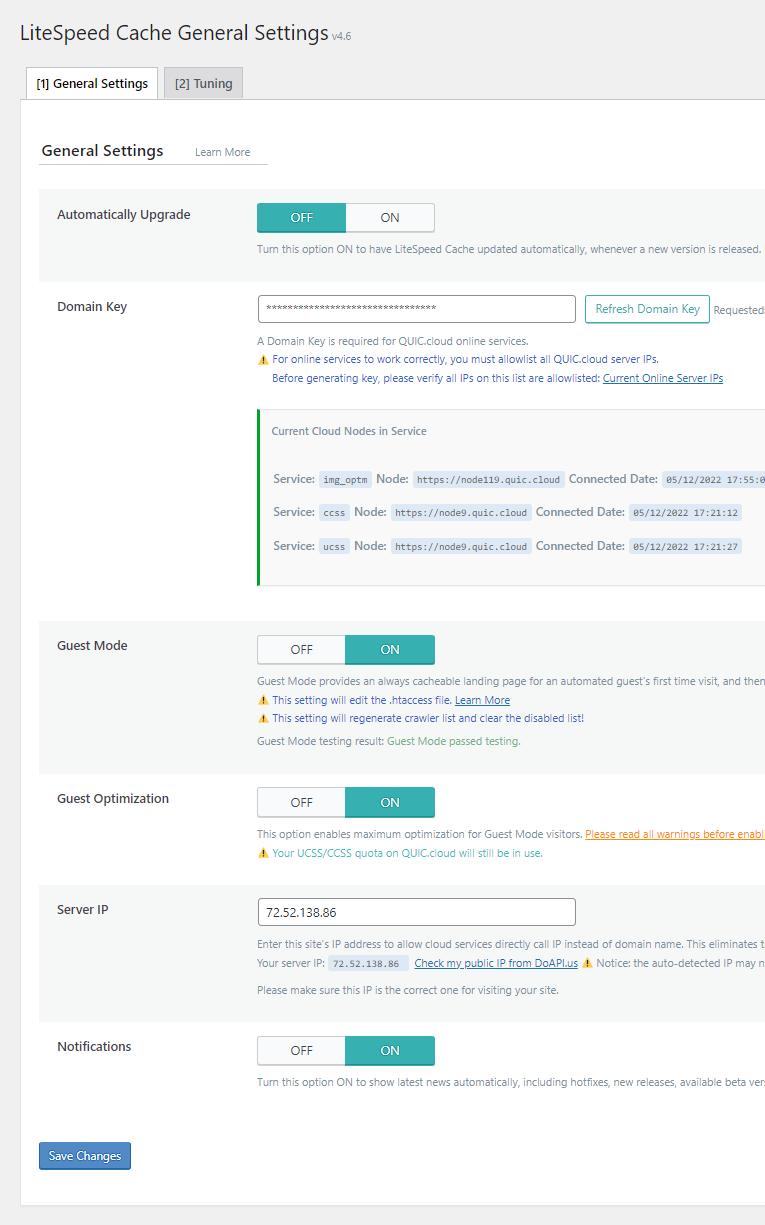
3. Presets
You should really go through this tutorial and tweak settings yourself. But if you’re stuck on using a preset, I would use Extreme, but disable CSS/JS combine and test asynchronous CSS. LiteSpeed Cache saves your previous settings under “History” in case something goes wrong.
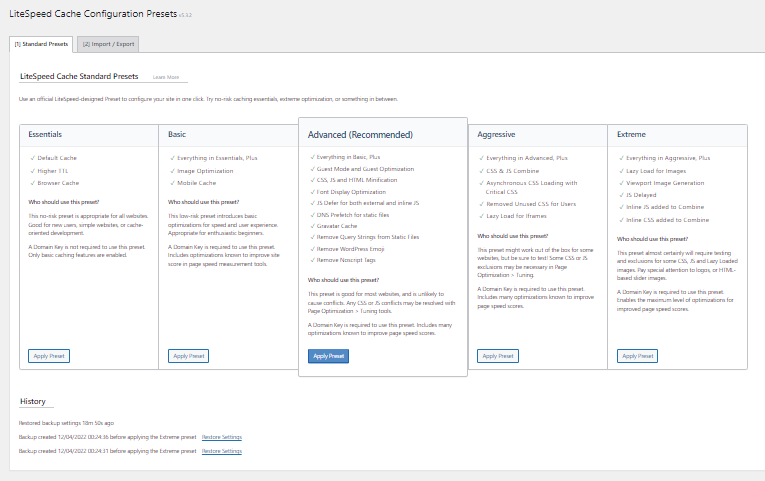
You can download the settings I use in this tutorial (via Google Drive) then upload them in Presets → Import/Export. I would test it on a staging site and still go through them, including:
- Request domain key
- Add your server IP
- Setup QUIC.cloud
- Setup object cache
- Localization files
- HTML lazy load selectors
- Clean database
- Use “Tuning” settings to exclude files if they break your site
- Use “Media Excludes” settings to manually exclude above the fold images
4. Cache
Cache
- Enable Cache – On – test your site in uptrends.com and look for x-litespeed-cache hit.
- Cache Logged-in Users – Off – only enable if you run a membership website or similar and have users logging in that need their own cache, otherwise it consumes resources.
- Cache Commenters – Off – creates a separate cache for people who leave a comment which is still pending, but also consumes resources if your blog gets lots of comments.
- Cache Rest API – On – used for many themes, plugins, and the WordPress Block Editor.
- Cache Login Page – On – saves server resources since the login page is a common target. Don’t change the login URL since LiteSpeed + QUIC.cloud optimize the default login page.
- Cache favicon.ico – On – caches favicon (the small logo image shown in the browser tab).
- Cache PHP Resources – On – caches static PHP files (i.e. CSS + JS) loaded by your theme. Only disable if you have dynamic CSS + JavaScript loaded in PHP, which you likely don’t.
- Cache Mobile – Depends – only enable if you serve different content on mobile/desktop, or use AMP, CCSS, UCSS, or Guest Mode and Guest Optimization (consumes resources). Since I recommend Guest Mode + Guest Optimization be turned on, this would also be on.
- Cache URIs – not necessary for most websites since the “cache logged-in users” setting handles private cached URIs, and no pages on your site generally need to be force cached.
- Drop Query String – marketing campaigns and tracking URLs often contain query strings where caching is ignored. The default list is usually fine, but if you have others, add them.
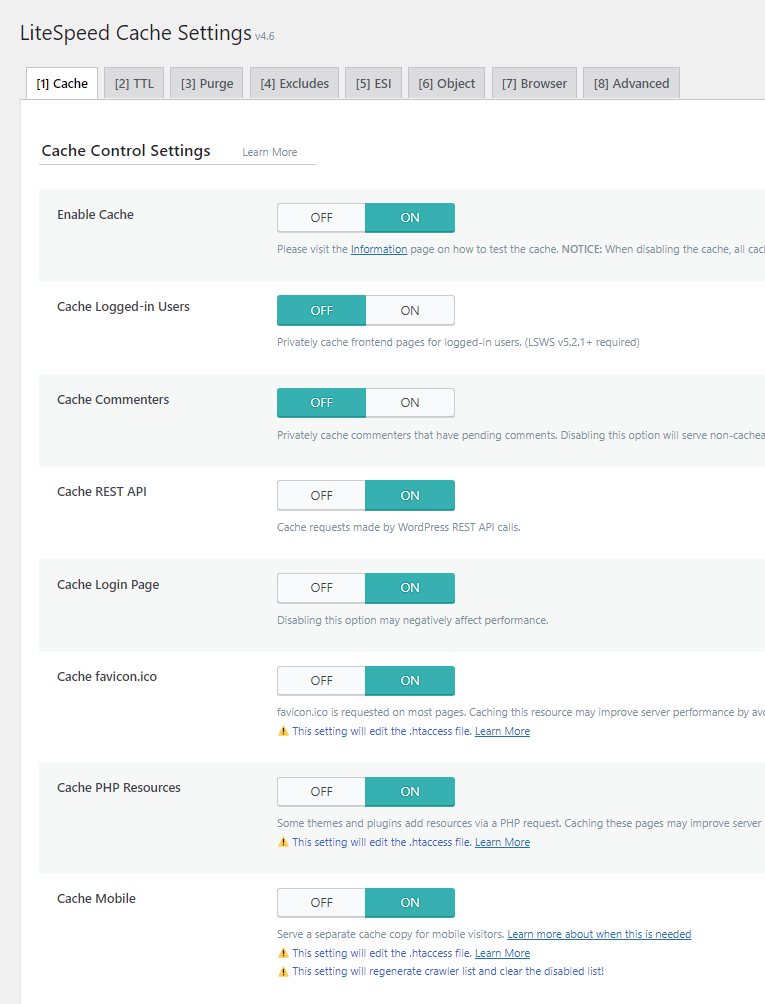
TTL
- Cache TTL – default settings are usually fine. Cache TTL is the amount of time LiteSpeed Cache keeps a cached file. Once it expires, it will create a new one. A shorter TTL is only needed if you update your site frequency and want to guarantee visitors will see the new cached version, but this will also consume more resources. A long TTL will save resources, but the cache won’t be refreshed as frequently, so visitors might not see the new content.
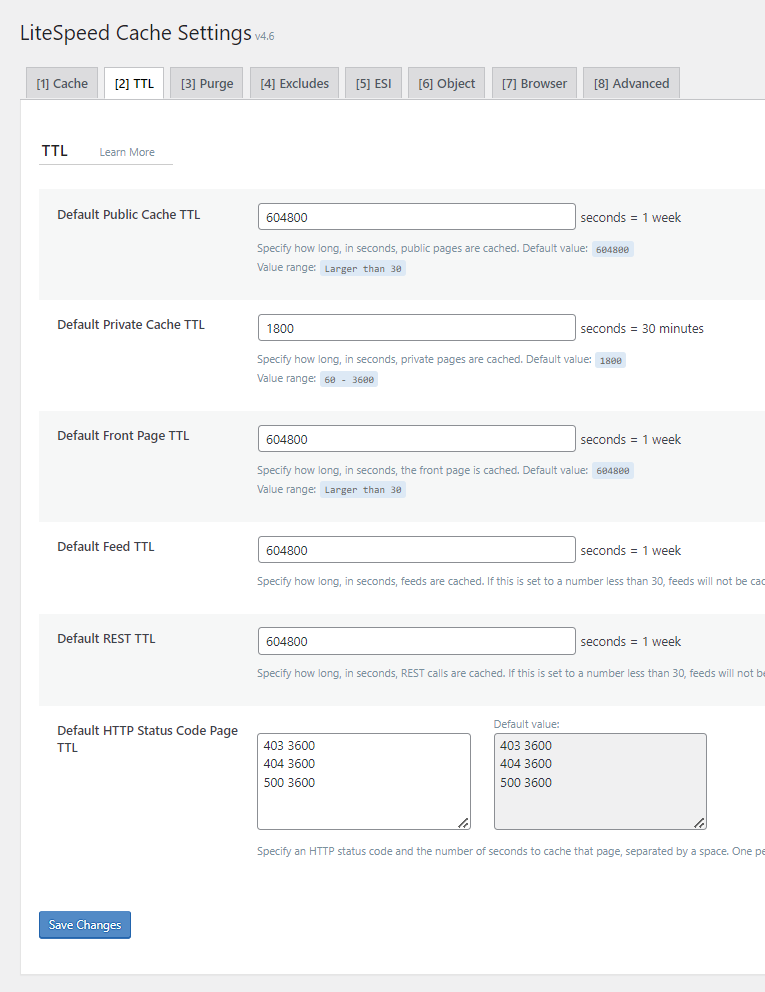
Purge
- Purge All On Upgrade – On – purges cache when WordPress core/themes/plugins are upgraded to make sure your site displays properly. LiteSpeed says to leave this on as well.
- Auto Purge Rules For Publish/Update – default settings are OK. Whenever you publish a post, your blogroll and other content may need to update, so they should also be purged.
- Serve Stale – Off – when turned on, the most recently purged (stale) copy of the page is served if the new cached version isn’t generated yet (enabling this consumes resources).
- Scheduled Purge URLs – no need to add URLs here unless you need pages purged at specific time (during low traffic), in which case you would also set scheduled purge time.
- Purge All Hooks – default settings are fine. When specific hooks are run, it will purge all. LiteSpeed says adding comment_post may be good to purge all when a comment is made.
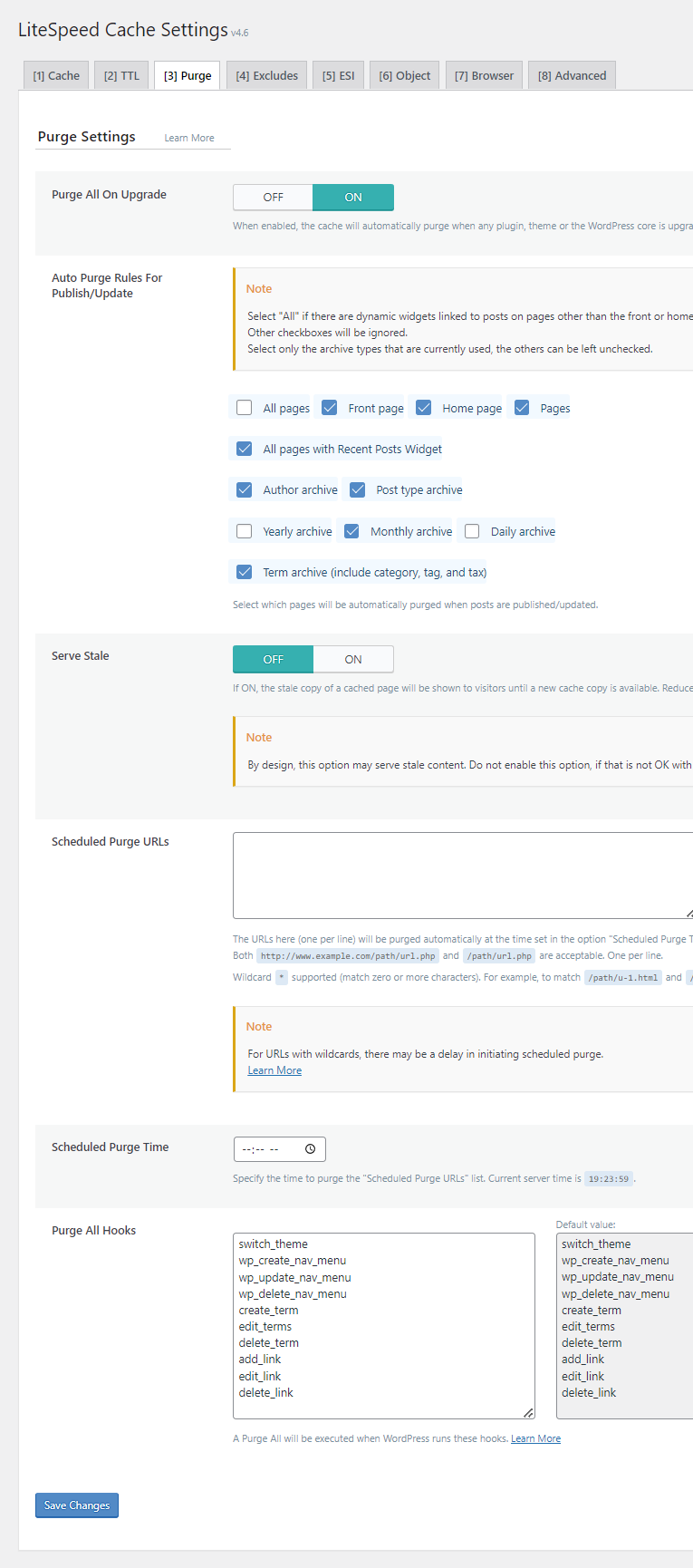
Excludes
Nothing to do here for most sites. You’re already controlling the cache in other LiteSpeed Cache settings, so there’s usually no reason to exclude things from the cache unless you have a reason.
ESI
- Enable ESI – Off – controls how specific elements on your dynamic pages are cached, whether it be publicly, privately, with a custom TTL, etc. Complicates things (LiteSpeed says it’s easier for a server to return full pages without messing with this). If ESI is off, there’s no need to change settings for admin bar, comment form, Nonces, or Vary Group. I’ve never used the ESI feature so I’ll be the one to admit I shouldn’t be giving advice on it.
Object
- Object Cache – On – caches your database and great for WooCommerce/dynamic sites (I prefer Redis over Memcached). To pass the connection test, enable Redis or Memcached in your hosting account (only one). In cPanel, it’s in Select PHP Version → Extensions, then enable the Redis or Memcached extension. Save changes and recheck the connection test.
- Method – Redis if that’s the extension you enabled in your host, otherwise Memcached.
- Host – leave as localhost.
- Port – leave as the default port.
- Default Object Cache Lifetime – 360s is fine.
- Username/Password – leave as-is (not needed).
- Redis Database ID – leave unless you use Redis and need a different ID.
- Global Groups – leave as-is (groups that should be cached at network level).
- Do Not Cache Groups – leave unless you want to add groups excluded in object cache.
- Persistent Connection – On – connection is kept alive and can make Memcached faster.
- Cache WP-Admin – Depends – caching the admin can speed it up but also risks you seeing outdated data. You can enable it if your admin is slow, otherwise leave this off.
- Store Transients – On – recommended by LiteSpeed to get server status notifications.
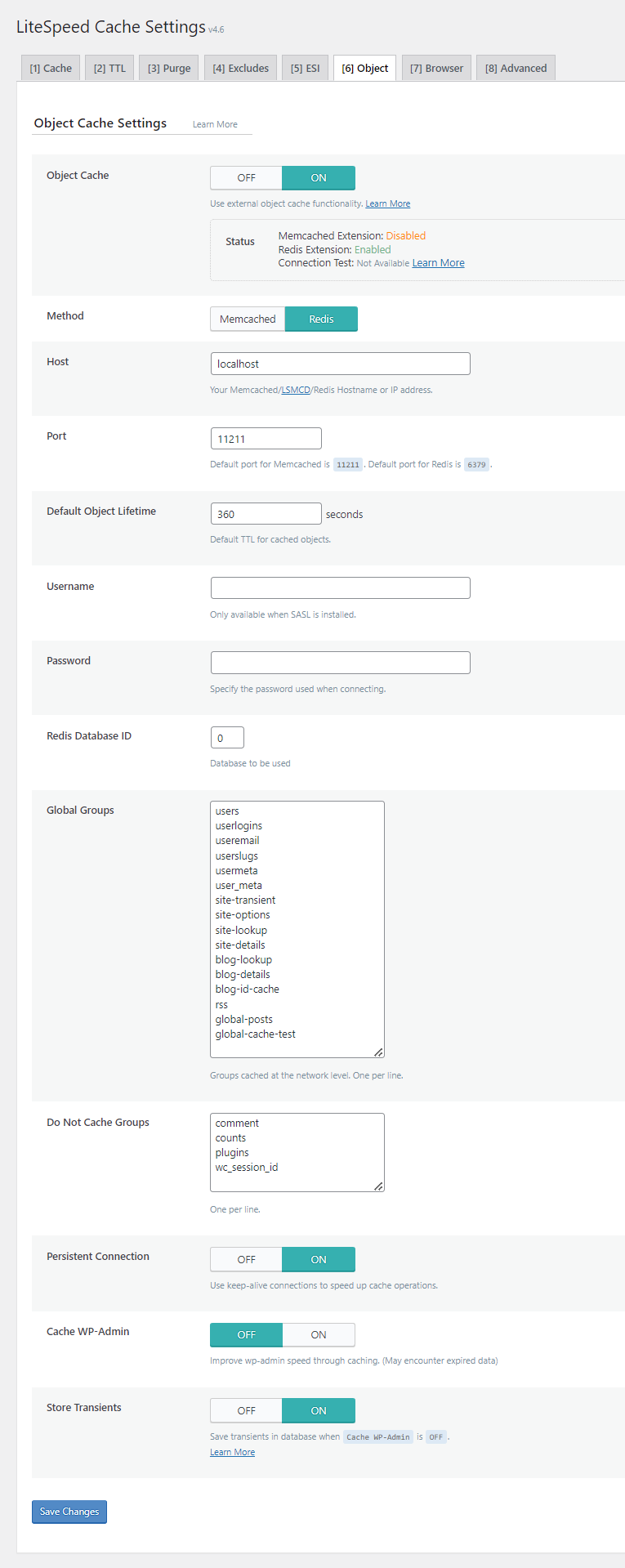
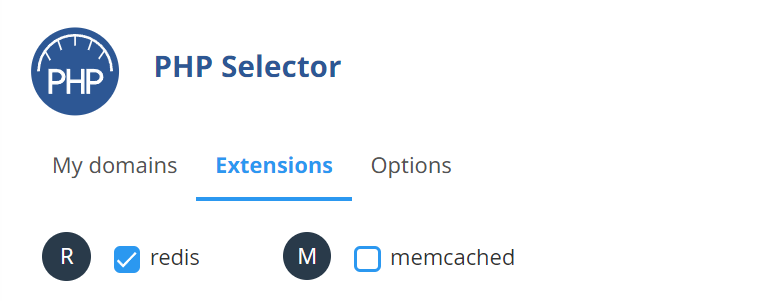
Browser
- Browser Cache – On – not sure why this isn’t enabled by default.
- Browser Cache TTL – 31557600 – this is 1 year which is recommended by Google to “serve static assets with an efficient cache policy” and tells browsers how long cache is stored. WooCommerce/dynamic websites probably want to set this to 43800 (1 month).
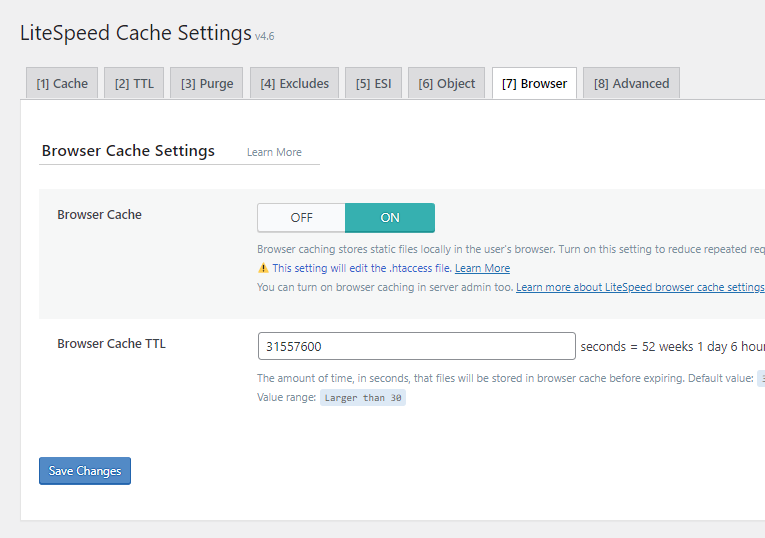
Advanced
- Login Cookie – leave as-is (only needed if you have multiple WordPress installs and need the cache to distinguish who is logged into which WordPress site, not used for a multisite).
- Improve HTTP/HTTPS Compatibility – Off – only enable if you’re using both HTTP and HTTPS and are noticing issues with the cache. You can also try forcing SSL to solve issues.
- Instant Click – On – similar to the Flying Pages plugin and WP Rocket’s link preloading. When users hover over a link, the page will download in the background so by the time they click it, the page will appear to load instantly (enabling this can consume resources).
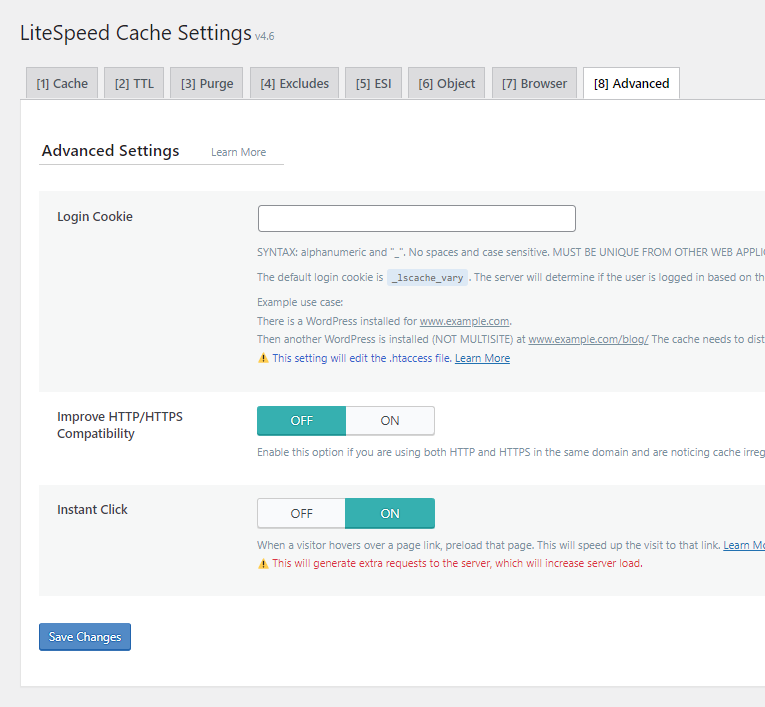
5. CDN
- QUIC.cloud CDN – On – QUIC was built specifically for LiteSpeed and is a solid CDN with HTML caching (similar to Cloudflare APO). However, you need to use their standard plan (which costs $.02 – $.08/GB) if you want to use all 81 PoPs with DDoS protection. The free plan only uses 6 PoPs. QUIC is also needed for certain page/image optimizations, but it doesn’t resize images for mobile, so you may want to test ShortPixel Adaptive Images.
- Use CDN Mapping – Off – QUIC.cloud’s CDN and Cloudflare don’t use CDN mapping, so this would usually be off. The only time you should use it is if you’re using a CDN that uses a CDN URL like BunnyCDN. In this case, add the CDN URL and select the files to be served.
- HTML Attribute To Replace – leave as-is since the CDN mapping setting is turned off.
- Original URLs – leave as-is unless it’s a multisite with different domains + subdomains.
- Included Directories – just the wp-content and wp-includes directories should be fine.
- Exclude Path – leave as-is unless you want to exclude specific directories from above.
- Cloudflare API – only needed if you’re using Cloudflare’s CDN instead of QUIC.cloud CDN.
How To Setup QUIC.Cloud
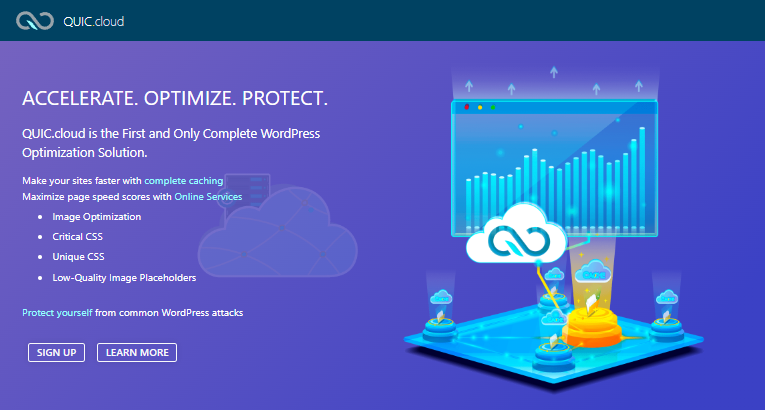
Step 1: In the LSC General settings, request a domain key and add your Server IP.
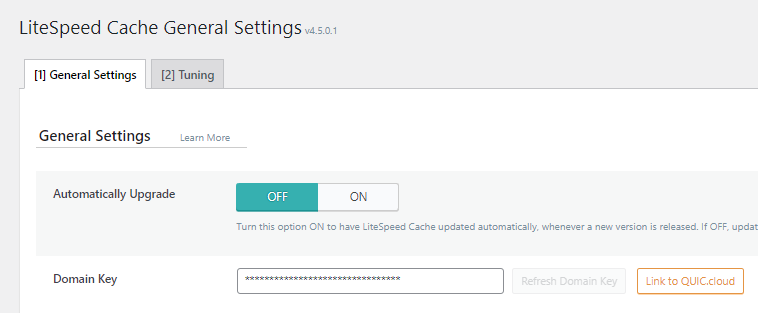
Step 2: Enable QUIC.cloud in the CDN settings (leave all other CDN settings as default).
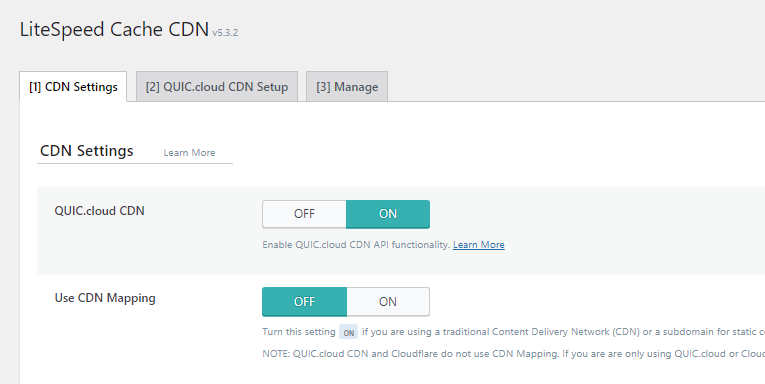
Step 3: Go to your QUIC dashboard, sign up, click your domain, and go to CDN → Enable CDN.

Step 4: Choose a DNS method: Cloudflare’s DNS performs well on dnsperf.com. But while QUIC’s DNS isn’t listed, it has better integration with QUIC’s CDN with more accurate routing.
- QUIC.cloud DNS: the easiest method is using QUIC.cloud’s DNS but this means you’ll be using AWS’s Route53 which is usually slower than Cloudflare’s DNS. They will copy your DNS records, then click “enable and add records” and they will assign you 2 nameservers. Login to your domain registrar and change nameservers to QUIC’s. Wait for QUIC to detect the change (i.e. 30 min.) and refresh the page. If successful, you’ll see “Using DNS” in QUIC.
- Cloudflare: LiteSpeed has a video tutorial on this. You will change your CNAME in Cloudflare to the one provided by QUIC.cloud. To do this, go to Cloudflare’s DNS settings and delete the A records for both your www and non-www domain. Next, create CNAME records for www and non-www domains. Make sure you use “DNS Only.” If you have Mail or MX records which use your root domain, you will need to create a subdomain and point the MX record to it. If you have issues, it may be caused by redirects in your .htaccess file.
- CNAME: copy the address from QUIC.cloud and login to your hosting panel (i.e. cPanel). Go to Zone Editor → Manage and find your domain (www.tomdupuisdemo.com). Click “edit” and change the record (tomdupuisdemo.com) to the URL from QUIC.cloud. Note this only works if your site is using the www version in your WordPress General settings.
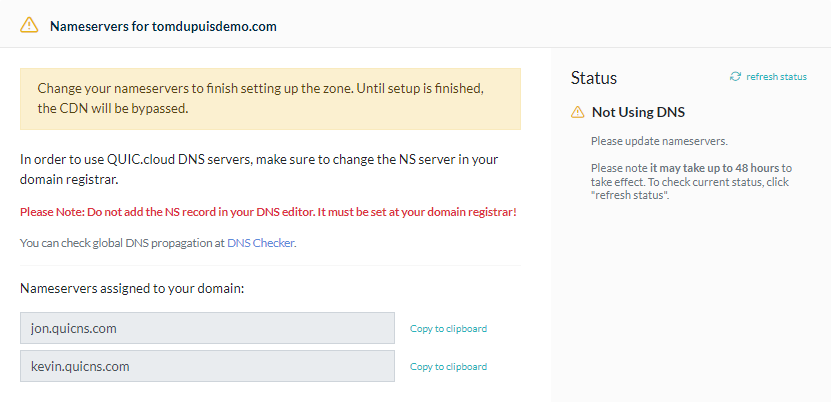

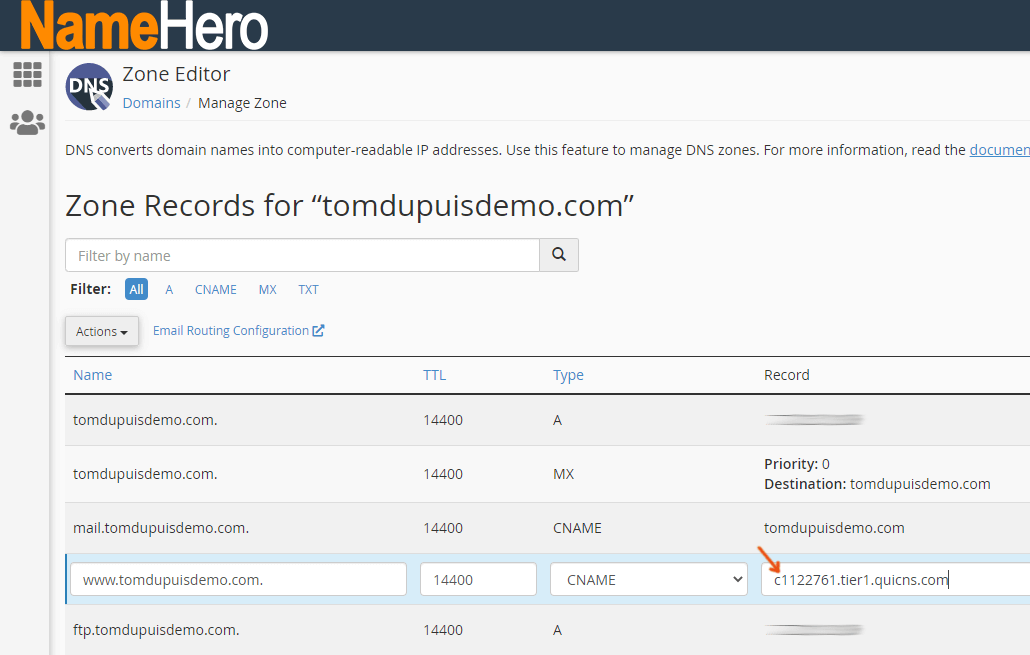
Step 5: Verify QUIC.cloud’s CDN is working. You should see a confirmation message in your QUIC.cloud dashboard (i.e. Using DNS when using QUIC.cloud’s DNS). Eventually, you’ll see traffic is served through QUIC.cloud in the Analytics settings. You can also do an HTTP/3 Test.
Step 6: Configure the “CDN Config” settings in QUIC.cloud. Here are a few tips:
- Enable static cache (unless you’re using another CDN to cache static files).
- Enable QUIC backend which lets QUIC connect to your server via QUIC and HTTP/3.
- The Standard Plan gives you access to security and anti DDoS features with reCAPTCHA and WP Brute Force Defense, restricting XML-RPC, and includes settings for WordPress.
Step 7: Use the standard plan, not the free plan! Even if you don’t buy credits, you still get a certain amount of free credits (which depend on whether you’re using LiteSpeed Enterprise). The free plan only uses 6 PoPs without DDoS protection, while the standard plan uses all 81 PoPs with more features. Their credit-based system is a little confusing but it’s pretty much the same regional-based pricing as BunnyCDN. Credits are also needed for UCSS, CCSS, and LQIP.
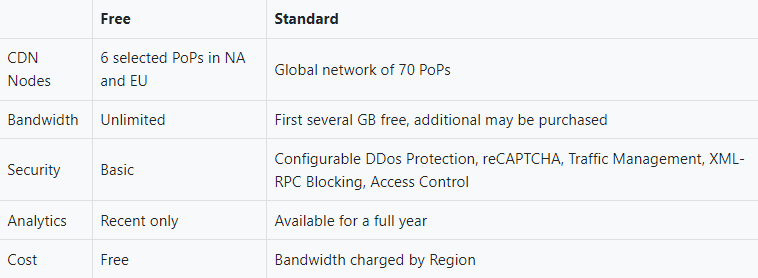
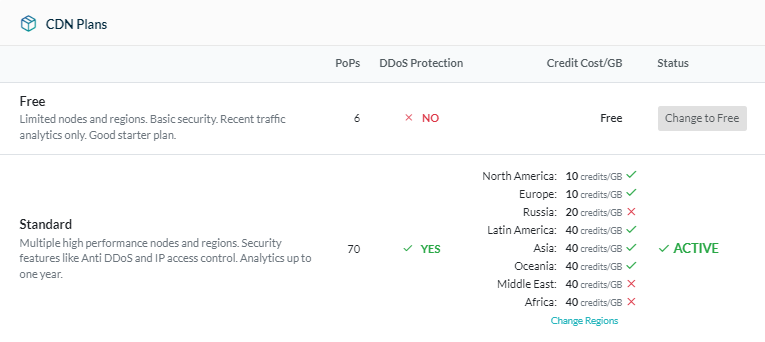
6. Image Optimization
Configure the image optimization settings, then send an optimization request.
- Auto Request Cron – On – sends a request to optimize newly uploaded images.
- Auto Pull Cron – On – if the previous setting is turned on, this should be on too.
- Optimize Original Images – On – see LiteSpeed’s example, but likely turn this on.
- Remove Original Backups – Off – don’t remove unless you’re happy with the quality.
- Optimize Losslessly – On – I prefer lossless compression but you can try this yourself.
- Preserve EXIF/XMP Data – Off – removing EXIF data helps reduce your image sizes.
- Create WebP Versions – On – create WebP images to serve them in next-gen formats.
- Image WebP Replacement – On – enable this if you have the previous option enabled.
- WebP Attribute To Replace – specify the element attributes to be replaced by WebP.
- WebP For Extra srcset – On – makes sure images in custom code are served as WebP.
- WordPress Image Quality Control – 85 – PSI tests images at 85% so that’s what I use.
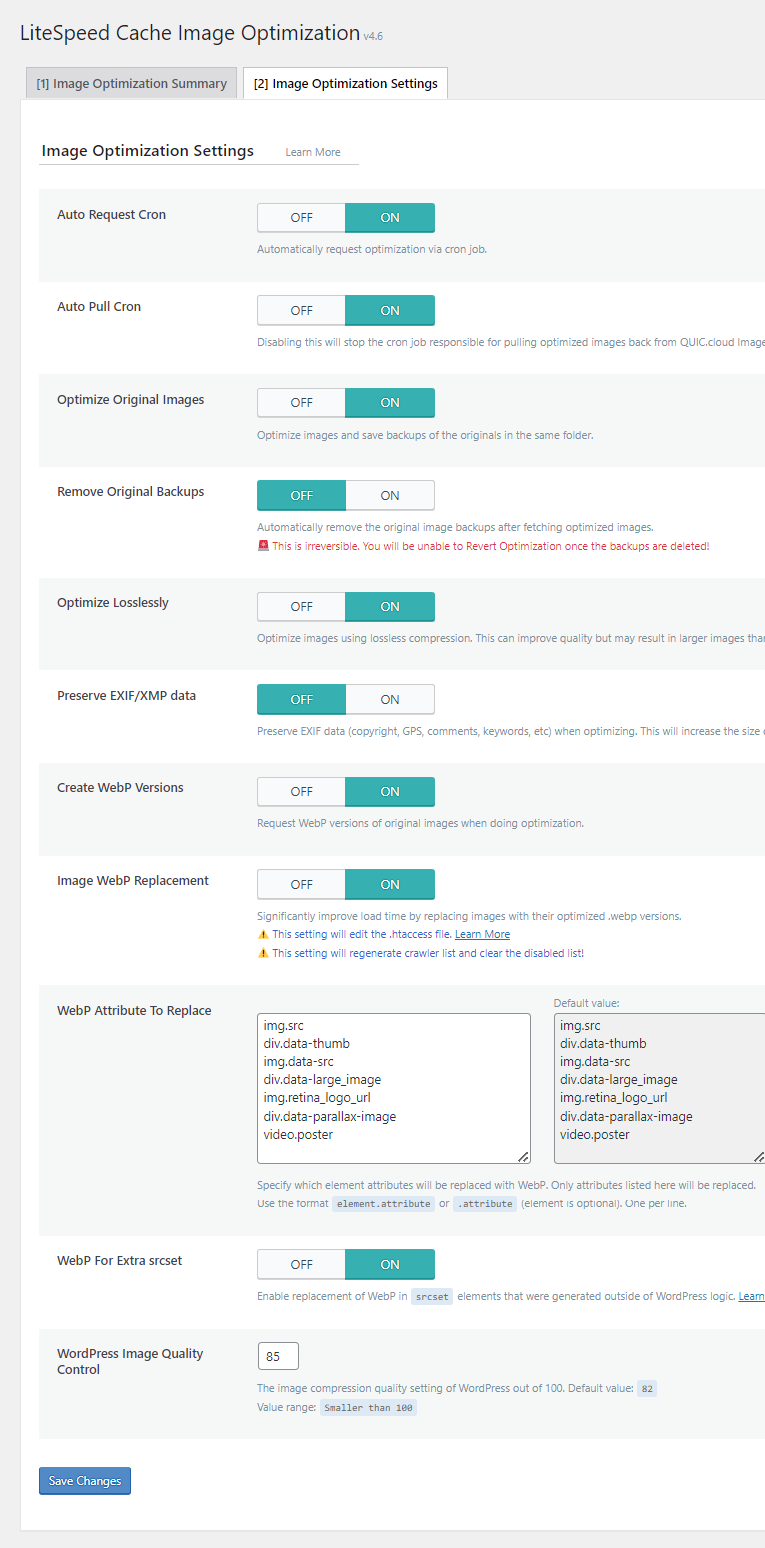
7. Page Optimization
CSS Settings
- CSS Minify – On – removes unnecessary characters from CSS.
- CSS Combine – Test – Johnny makes some good arguments on why you shouldn’t combine especially if you have large CSS files. However, this is needed for UCSS to work. This is something that really depends on your website, so be sure to test your own results.
- Generate UCSS – Off – only use if CSS combine is turned on. UCSS helps remove unused CSS, but heavy CSS is often from themes/plugins which you can measure in the Chrome Dev Tools coverage report (see screenshot). If this is on, “cache mobile” should also be on. UCSS relies on QUIC.cloud (as well as CCSS) so you’ll want to be using QUIC if those are on.
- UCSS Inline – Off – this should always be off. Even if UCSS is enabled, it’s better to load it in a separate file vs. inline (explained by Vikas). This way, the separate file can be cached and doesn’t increase HTML size. Turning this on might give you better PageSpeed Insights scores, but it’s slower for actual visitors. Same reason remove unused CSS is faster in FlyingPress (which loads it in a separate file) compared to WP Rocket which loads it inline.
- CSS Combine External and Inline – Off – turn on if “combine CSS” is also on. This also combines external/inline CSS files which can often prevent your website from breaking.
- Load CSS Asynchronously – Test – you’ll likely get FOUC or layout shift issues if this is enabled, but this is something I would definitely test and see how it impacts your speed.
- CCSS Per URL – Off – disable if previous option is off, especially if using a page builder.
- Inline CSS Async Lib – Off – CSS will be render-blocking, but you’ll avoid FOUC issues.
- Font Display Optimization – default. Setting this to Swap can also cause FOUC issues. But if you see “ensure text remains visible during webfont load” in PSI, you can try Swap.
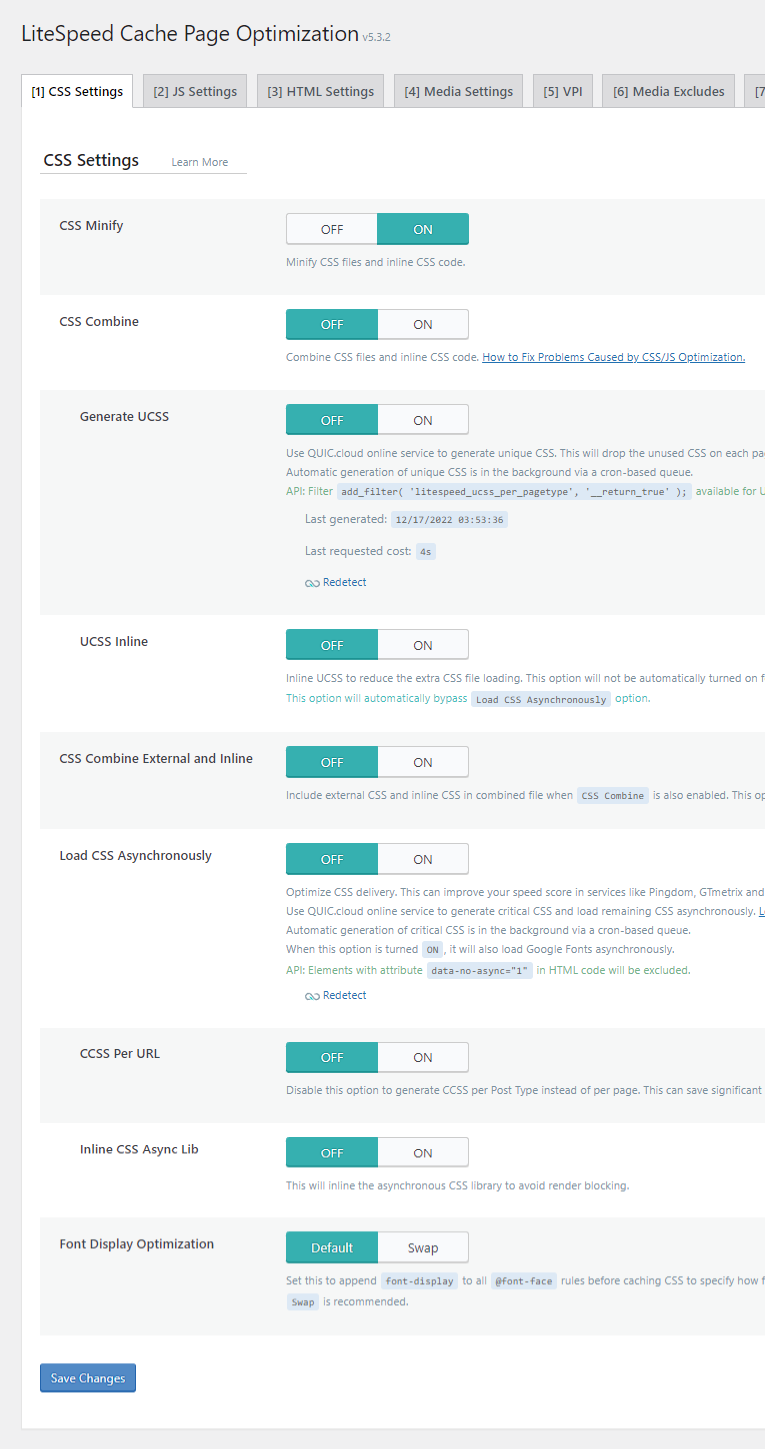
JS Settings
- JS Minify – On – strips unnecessary characters from JavaScript.
- JS Combine – Off – don’t combine with HTTP/2 or large JS files.
- JS Combine External and Inline – Off – only enable if JS combine is enabled.
- Load JS Deferred – Test – delay will probably give you the best results, deferred is also good but can break your website, off is safest. If the defer option breaks your site, exclude problematic files under “JS Deferred Excludes” in the Tuning settings. Test them yourself.
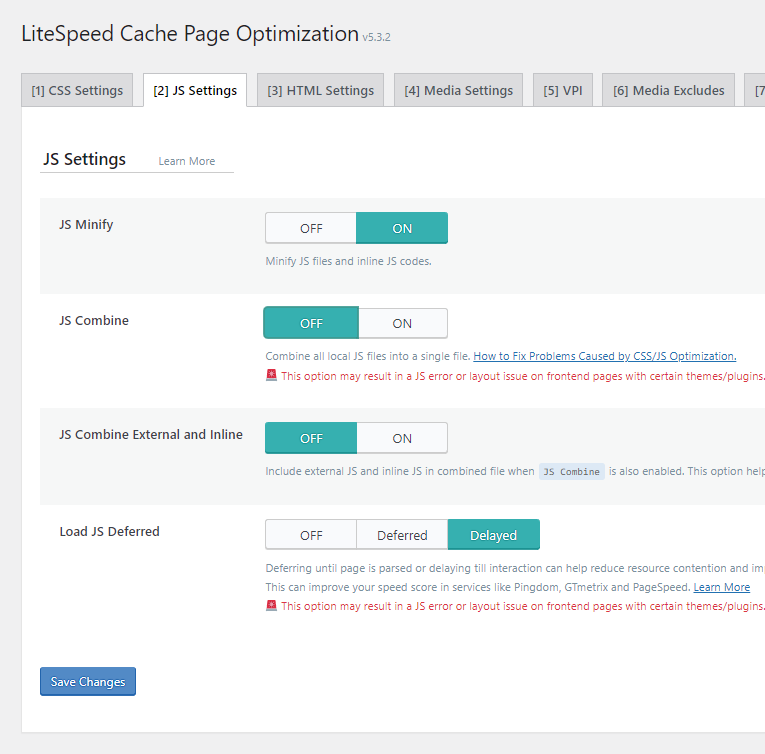
HTML Settings
- HTML Minify – On – strips unnecessary characters from HTML.
- DNS Prefetch – open your third-party code report in PSI and look at all third-party domains loading on your site. Ignore CDN URLs + fonts.gstatic.com since they should use preconnect instead of prefetch. Next, eliminate all third-party code that is being delayed. The only domains you should prefetch are the ones left after that. Or you can see this list.
- DNS Prefetch Control – On – leave it on, but nothing to do if you added them manually.
- HTML Lazy Load Selectors – similar to lazy loading images only it can be done for any below the fold element (#comments and #footer are common, WooCommerce related products, and Elementor sections loading near the bottom of the page). This video has the same steps for LSC. View your site → right click any element you want to lazy load → inspect → right click highlighted code → copy → copy selector → paste it into this field.
- Remove Query Strings – Off – somewhat outdated and shouldn’t impact load times.
- Load Google Fonts Asynchronously – Off – test carefully and view your GTmetrix Waterfall “fonts” tab to see the difference in your font load times. I like to keep it off.
- Remove Google Fonts – Off – only use if you’re hosting fonts locally and want to make sure any third-party fonts aren’t being loaded on your website, which they shouldn’t be.
- Remove WordPress Emoji – On – emojis aren’t good for load times, so turn this on.
- Remove Noscript Tags – Off – some people are still using old browsers. Keeping tags ensures better compatibility to make sure your website’s JavaScript is loaded correctly.
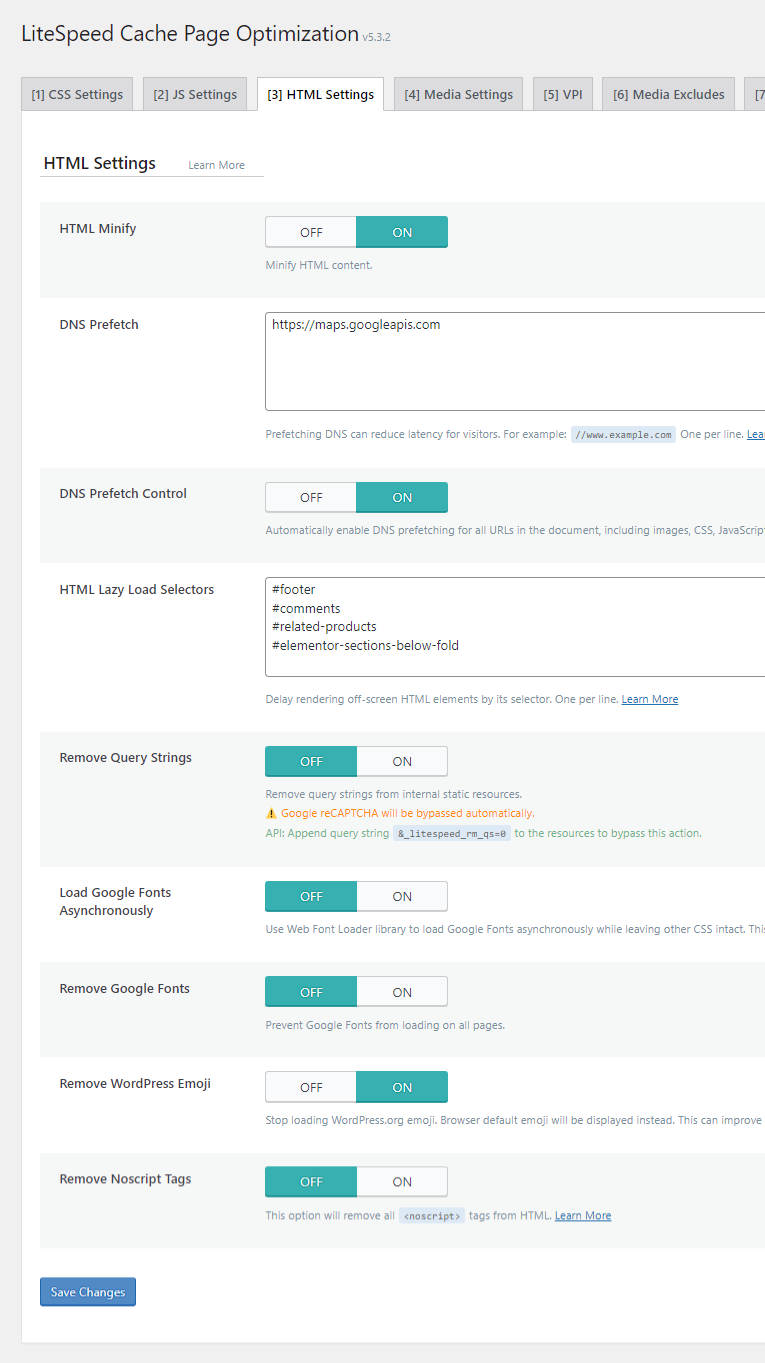
Media Settings
- Lazy Load Images – On – you can also add a fade-in effect for smoother scrolling.
- Basic Image Placeholder – use an image placeholder while the images are loading.
- Responsive Placeholder – Depends – on if using basic image placeholder (reduces CLS).
- Responsive Placeholder SVG – specify the SVG to use as the responsive placeholder.
- Responsive Placeholder Color – default gray color LiteSpeed Cache uses should be fine.
- LQIP Cloud Generator – On – a lower quality image (which is generated by QUIC.cloud) will be used as the placeholder before the higher quality image is loaded. Test it yourself.
- LQIP Quality – if the previous setting is enabled, this determines the lower quality image.
- LQIP Minimum Dimensions – 150×150 pixels is fine. This is only for when LQIP cloud generator is turned on, and LQIP will only be used when images are larger than this size.
- Generate LQIP In Background – On – LiteSpeed says turning it off slows down page load.
- Lazy Load Iframes – On – lazy loading videos, maps, and other iframes improves speed.
- Add Missing Sizes – On – adds missing image dimensions to set explicit widths + heights.
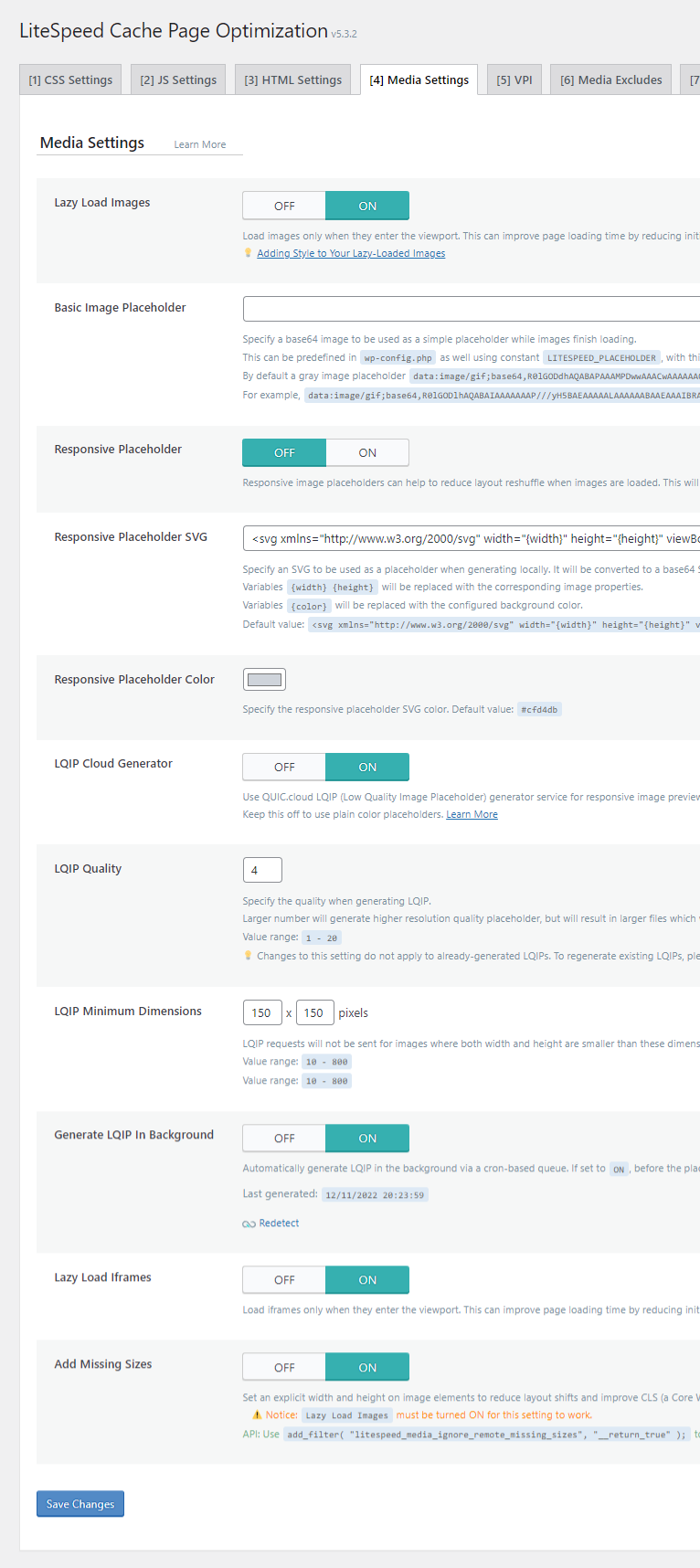
VPI
- Viewport Images – On – QUIC.cloud will detect images loading above the fold and automatically exclude them from lazy load for better LCP. Lazy load images must be on.
- Viewport Images Cron – On – they’re generated in the background via cron-based queue.
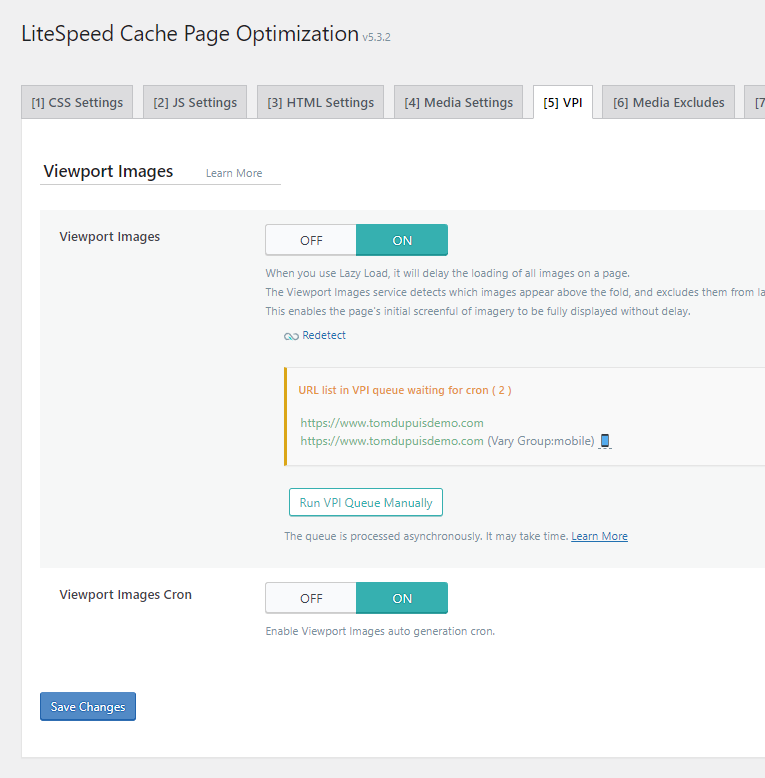
Media Excludes
While the Viewport Images setting tries to exclude viewport images from lazy load for better LCP, you can manually exclude them to make sure. Since page builders load background images in CSS, they’re not lazy loaded by default, meaning you’ll need to use the data-no-lazy attribute.
- Logo – add the image URL.
- Sidebar images – add the image URL or class name.
- Featured images – add the class name (i.e. class=”attachment-full size-full).
- Background images – add the “data-no-lazy” attribute to background images.
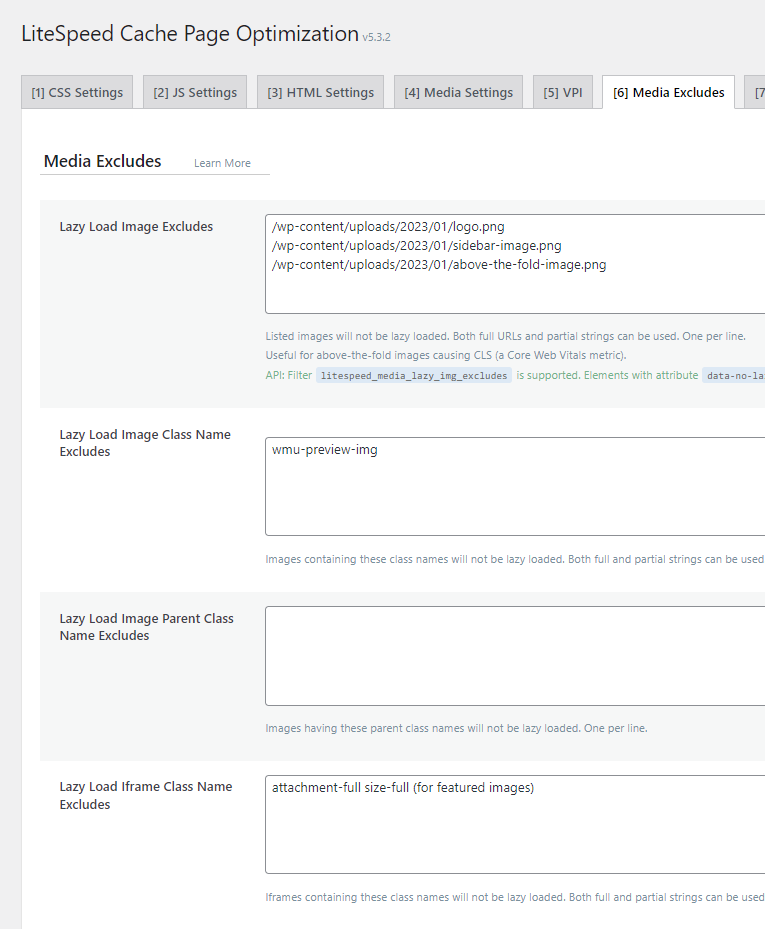
Localization
- Gravatar Cache – On – great when you have lots of comments with Gravatars.
- Gravatar Cache Cron – On – you want it enabled if the previous setting is enabled.
- Gravatar Cache TTL – the default setting of 604800 seconds (1 week) should be fine.
- Localize Resources – On – great feature to localize external JS files. Add them below.
- Localization Files – open your third-party code report to see which JavaScript files are loading, then consider delaying them (Google Analytics, Tag Manager, reCAPTCHA, etc). I copied the list from LSC and added it below (see “popular scripts”). Instead of delaying Google Fonts, host them locally. Delaying ads can also affect revenue. See common issues.
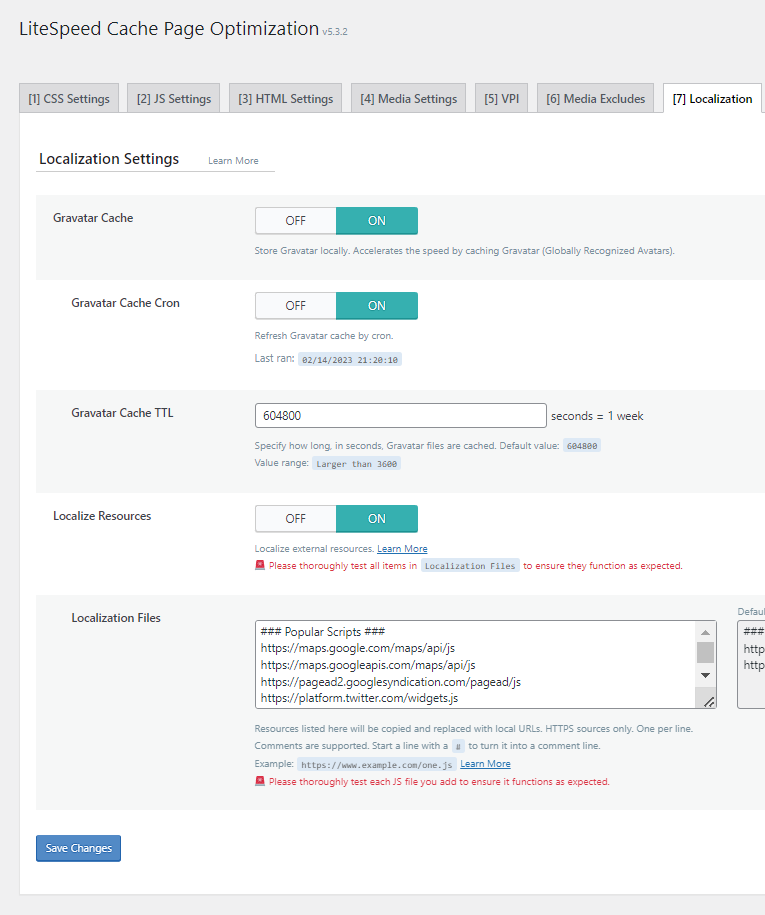
### CDNs ###
https://ajax.aspnetcdn.com
https://ajax.cloudflare.com/
https://ajax.googleapis.com/ajax/
https://cdn.jsdelivr.net/
https://cdnjs.com/
https://cdnjs.cloudflare.com/
https://code.jquery.com/
https://maxcdn.bootstrapcdn.com/
https://netdna.bootstrapcdn.com/
https://oss.maxcdn.com/
https://stackpath.bootstrapcdn.com/
### Popular Scripts ###
https://maps.google.com/maps/api/js
https://maps.googleapis.com/maps/api/js
https://pagead2.googlesyndication.com/pagead/js
https://platform.twitter.com/widgets.js
https://platform-api.sharethis.com/js/
https://s7.addthis.com/js/
https://stats.wp.com/
https://ws.sharethis.com/button/
https://www.google.com/recaptcha/api.js
https://www.google-analytics.com/analytics.js
https://www.googletagmanager.com/gtag/js
https://www.googletagmanager.com/gtm.js
https://www.googletagservices.com/tag/js/gpt.js
https://connect.facebook.net/en_US/fbevents.js
https://connect.facebook.net/signals/config/
Tuning
Most settings are if you want to exclude specific things from being optimized (CSS, JS, URLs, deferred JS, Guest Mode JS, and roles). You usually only need to do this if a specific setting breaks your site. For example, if you minify or combine CSS/JS and it breaks your site, find the problematic file (in your source code), then add them. Same concept for most other settings.
8. Database
In the Manage tab, you probably want to delete everything except post revisions and auto drafts, which are backups of posts that you may need in the future. You can also optimize tables.
DB Optimization Settings
- Revisions Max Number – 10 gives you some backups while not adding too much bloat. I prefer to be more aggressive with 5, but it’s totally up to you how many revisions to keep.
- Revisions Max Age – 0 makes sense to me (they will never be deleted). Sometimes I don’t update a post for a very long time, so automatically deleting the backups isn’t a good idea.
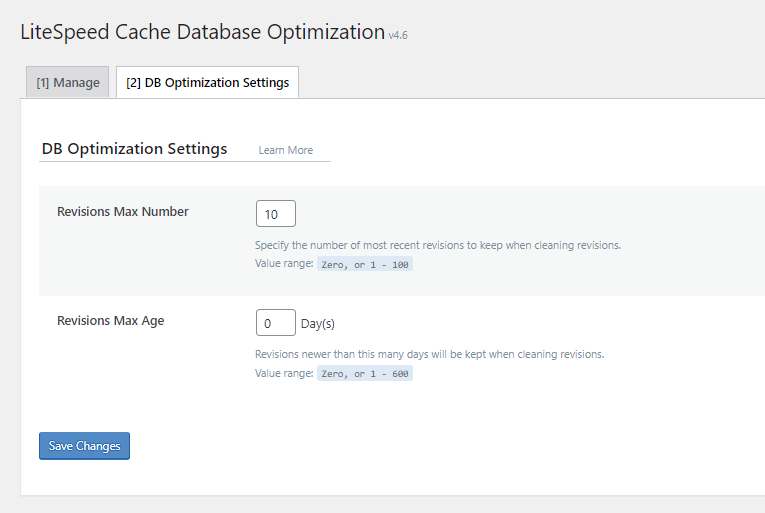
9. Crawler
This crawls your site for pages with expired cache and refreshes them. It consumes resources which is why it’s controlled at a server level and usually not allowed by most hosts, especially shared hosting (it’s usually only if you manage your own server). So, you usually don’t need to do anything. If you do manage your own server, you’ll want to enable the crawler and see WP Johnny’s instructions (in summary, he recommends enabling the crawler in the General settings, submitting your sitemap in Sitemap settings, then leaving all other settings as default).
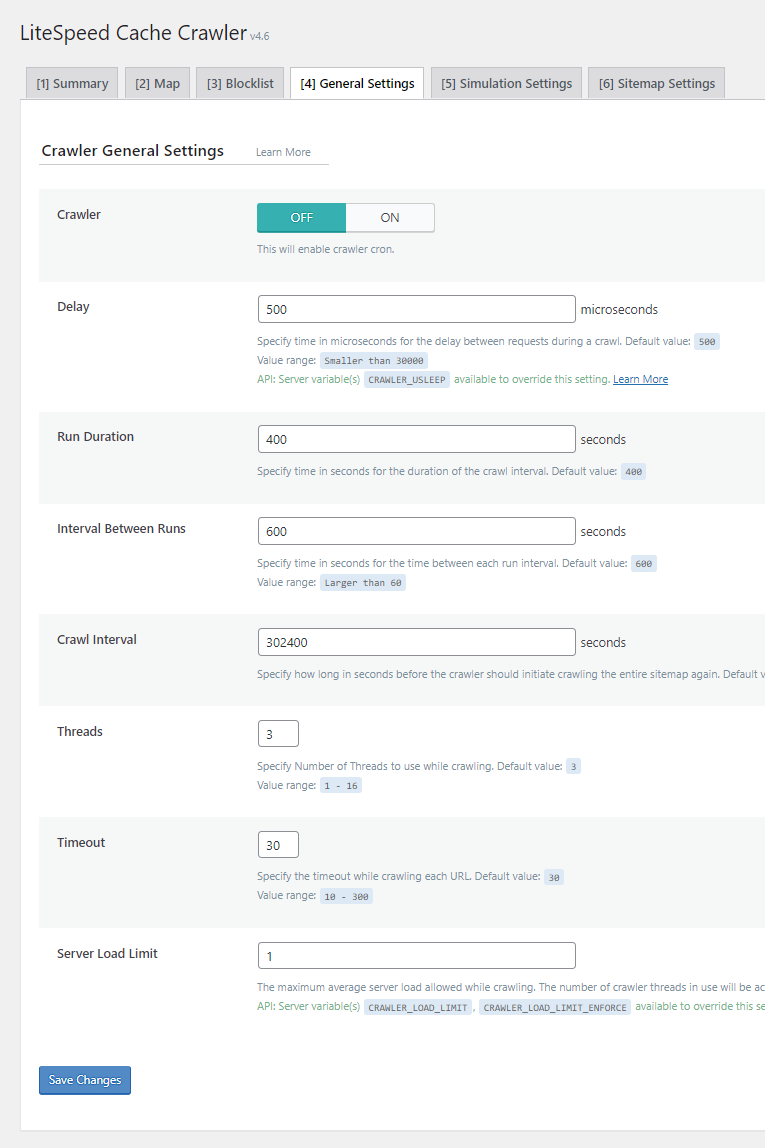
10. Toolbox
Most Toolbox settings are explanatory (purging, import/export, edit .htaccess, reports, debug, logs, beta test, etc). So I’ll just cover the heartbeat settings which control WordPress heartbeat.
Heartbeat
- Frontend Heartbeat Control – On – control heartbeat in the frontend.
- Frontend Heartbeat TTL – 0 – you can usually disable it here, but test it.
- Backend Heartbeat Control – On – control heartbeat in the backend.
- Backend Heartbeat TTL – 0 – you can usually disable it here, but test it.
- Editor Heartbeat – On – controls heartbeat in the post editor.
- Editor Heartbeat TTL – 120 – you probably want things like autosaves, but increase it.
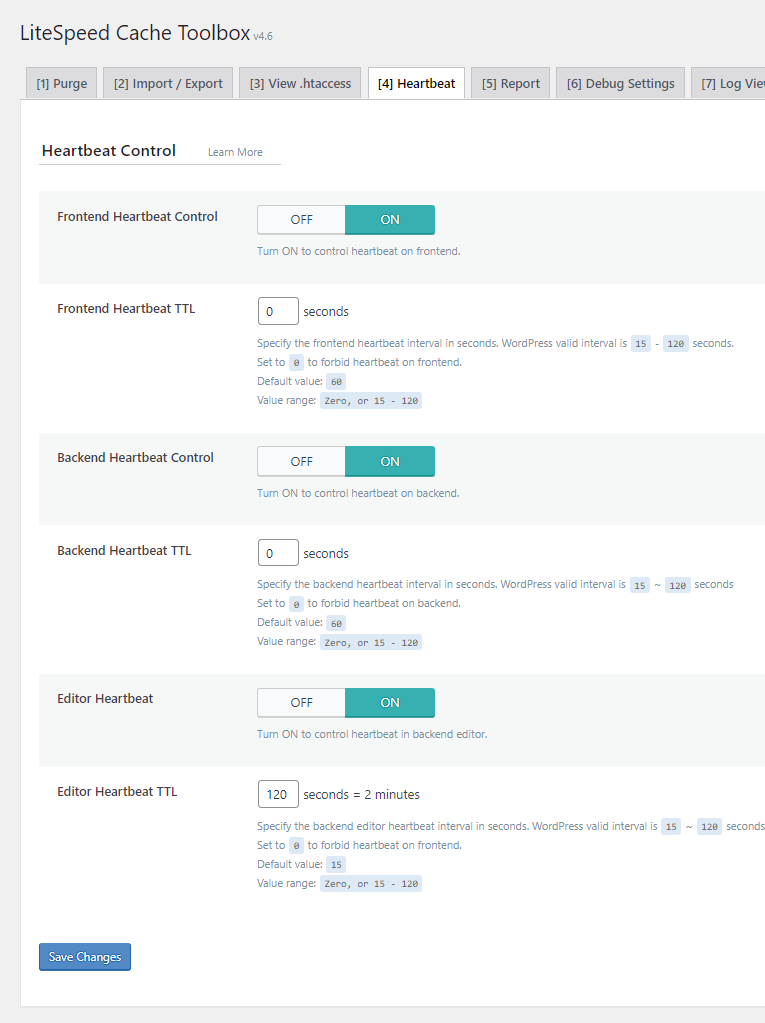
11. Configure Perfmatters With LiteSpeed Cache
Perfmatters has a few optimizations not included with LiteSpeed Cache (bloat removal, script manager to reduce CSS/JS, and the preloading tab to preload fonts/images). Configure your LiteSpeed Cache settings normally, then disable everything in Perfmatters except the following:
General Settings – configure these normally, but don’t move your wp-login page or QUIC’s brute-force attack protection won’t protect it. Since LSC already limits Heartbeat, you don’t need to do this in Perfmatters, so you can leave it as “default.” Otherwise, many of these are optimizations related to WordPress core – something LiteSpeed Cache wouldn’t generally do.
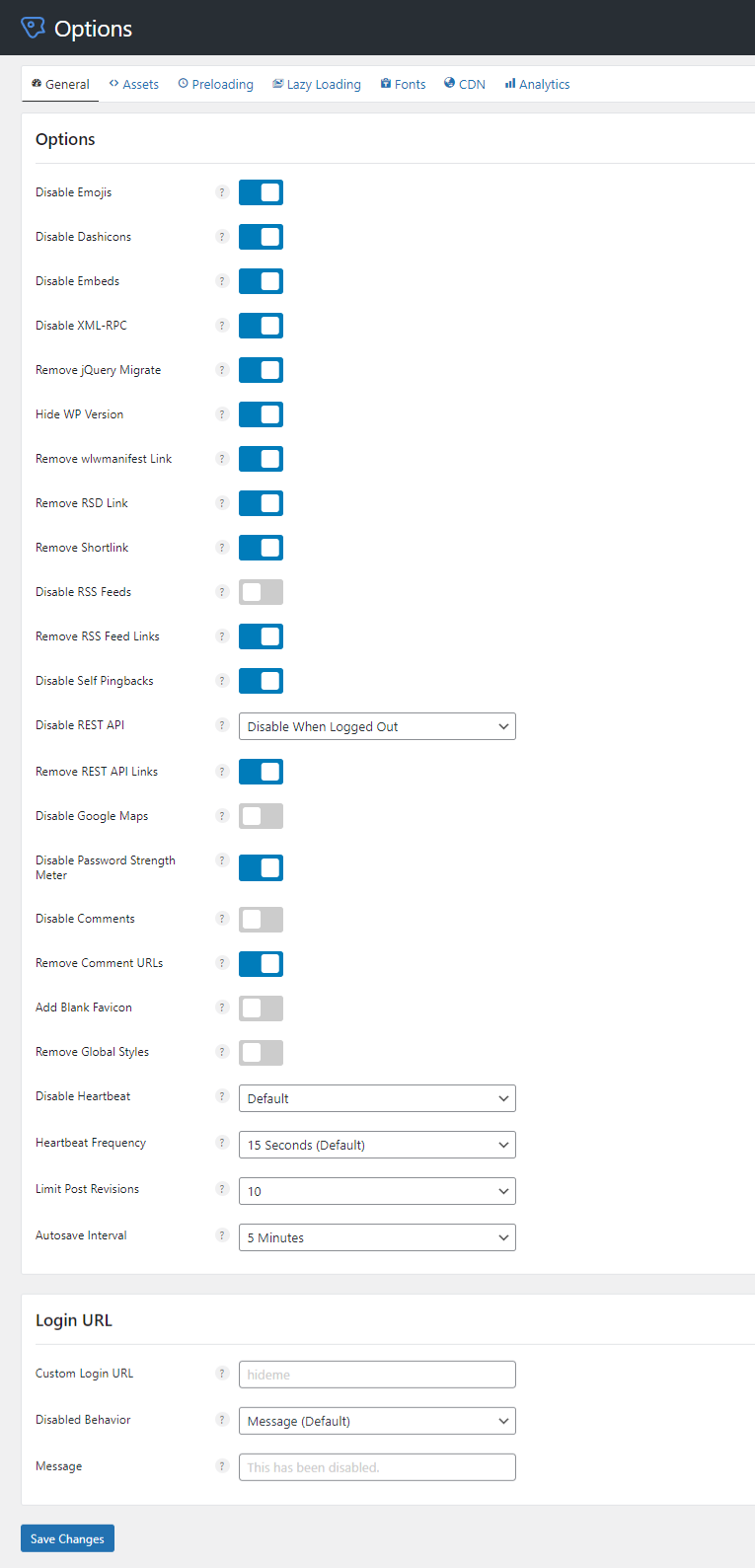
Script Manager – disable plugins or CSS/JS files where they’re not used (reduces CSS/JS size). First, enable the script manager, then go to your script manager settings to enable test mode and display dependencies. Test mode lets you test the script manager without it breaking your site by only showing changes to logged in admins (just remember to disable this when you’re done to publish changes). Display dependencies shows you plugins using jQuery (try to avoid).

Next, view any page on your site and in the top menu, go to Perfmatters → Script Manager. Go through your list of plugins/CSS/JS files to see what doesn’t need to load on the page. You have several options on where to disable them. This is often done with page builder/WooCommerce plugins (which are notorious for loading everything). Two examples are disabling your contact form everywhere but the contact page or disabling social sharing plugins everywhere but posts:
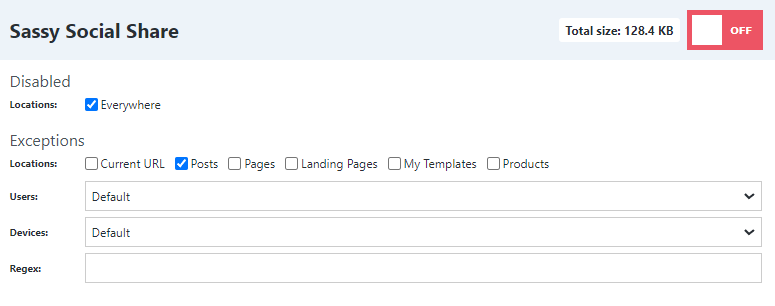
Preloading – LSC can’t preload fonts/images, so you can use Perfmatters for this. You usually don’t need prefetch/preconnect since most third-party code will be hosted locally or delayed.
- Fonts – copy your font files from a Waterfall chart and test preloading them. This only works when fonts are hosted locally and should only be done if they’re above the fold or are in CSS files. Preloading should reduce blocking time (brown bar in GTmetrix) and LCP.
- Images – LSC excludes above the fold images from lazy load using the Viewport setting, but it doesn’t preload them. You can use Perfmatters to preload images (or use a plugin).
- wp-block-library – if you use Gutenberg, try preloading wp-block-library. If you’re not using Gutenberg, consider disabling this file in your script manager to slightly reduce CSS.
I also recommend:
- Open your site in an incognito window.
- Open Chrome Dev Tools (Mac: Option + ⌘ + J, Windows: Shift + CTRL + J).
- Click the “Network” tab.
- Reload the page.
- View the file names (but don’t scroll down the page).
- These are part of your first load and are critical files to optimize, test preloading, etc.
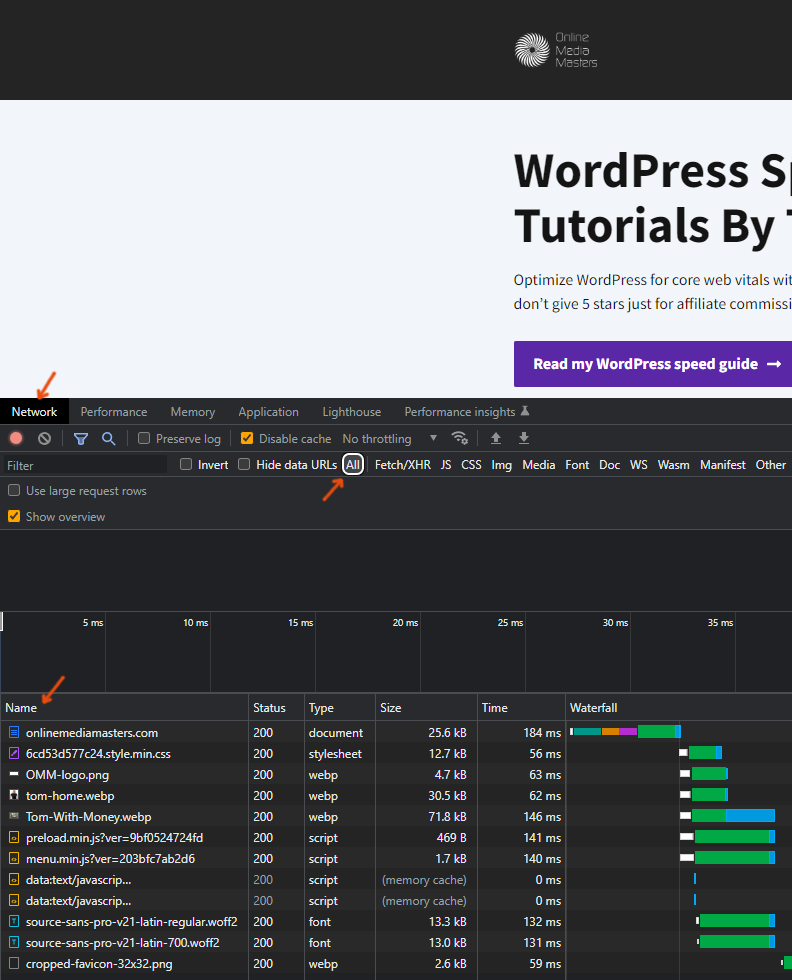
12. Recommended LiteSpeed Hosts (And Bad Ones)
I recommend one of the LiteSpeed hosts below which IMO, are much better alternatives than the ones above. Several control panels also use LiteSpeed (RunCloud, CloudPages, GridPane).
FastComet is budget-friendly but doesn’t use NVMe and uses Memcached instead of Redis. NameHero is good for US sites with an NVMe-powered data center and Redis. ChemiCloud is similar to NameHero but has more NVMe data centers and can scale cores/RAM. Or Scala for US sites on shared/cloud hybrid with guaranteed resources. Scala doesn’t charge extra for a LiteSpeed license when you use their custom panel (sPanel) while NameHero charges $540/year on VPS plans and ChemiCloud’s charges $119.40/year on VPS plans. For a VPS, you’re probably better off at Scala/ChemiCloud.
| FastComet FastCloud Extra | NameHero Turbo WordPress | ChemiCloud WordPress Turbo | Scala Entry WP Cloud | |
|---|---|---|---|---|
| Type | Shared | Shared | Shared | Hybrid |
| Cores/RAM | 6 cores/6GB | 3 cores/3GB | 3 cores/3GB (scalable to 6/6) | No limits |
| Storage type | 35GB SATA | Unlimited NVMe (US data center) | 40GB NVMe (9/11 data centers) | 50GB NVMe (US data center) |
| Database | MySQL | MariaDB | MariaDB | MariaDB |
| Object cache | Memcached | Redis | Memcached | Redis |
| Data centers | 11 | 2 (US + EU) | 11 | 3 (US + EU) |
| Server | LiteSpeed | LiteSpeed | LiteSpeed | LiteSpeed |
| Cache plugin | LiteSpeed Cache | LiteSpeed Cache | LiteSpeed Cache | LiteSpeed Cache |
| CDN | QUIC.cloud ($.02-.08/GB w/ monthly credits) | QUIC.cloud ($.02-.08/GB w/ monthly credits) | QUIC.cloud ($.02-.08/GB w/ monthly credits) | QUIC.cloud ($.02-.08/GB w/ monthly credits) |
| Full page caching | ✓ | ✓ | ✓ | ✓ |
| Control panel | cPanel | cPanel | cPanel | sPanel |
| Email storage | 2.048GB | Adjustable | Adjustable | Adjustable |
| Inodes | 500,000 | 500,000 | 500,000 | Unlimited |
| Incidents | 2022 DDoS attack on 3 data centers | 2011 2-day node outage | None | None |
| Migrations | 3 free | 1 free | 200 cPanel + 10 non-cPanel | Unlimited free |
| Support | B | B | B | A |
| TrustPilot rating | 4.9/5 | 4.6/5 | 4.9/5 | 4.9/5 |
| Monthly price | $5.49 (1-3 years) | $9.98 (3 years) | $5.99 (3 years) | $14.95 (3 years) |
| Renewals | $21.95/mo | $19.95/mo | $19.95/mo | $24.95/mo |
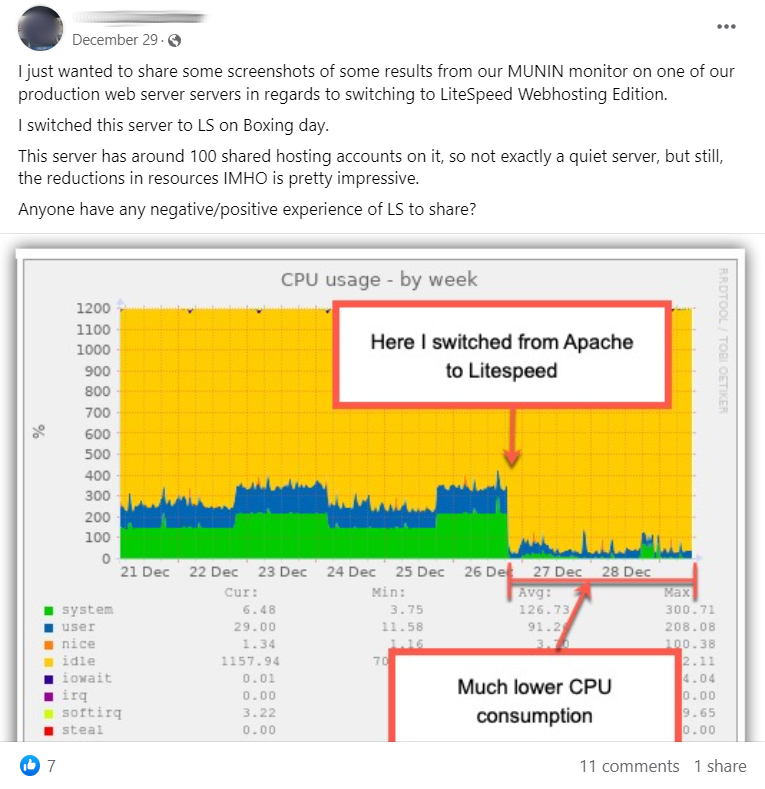


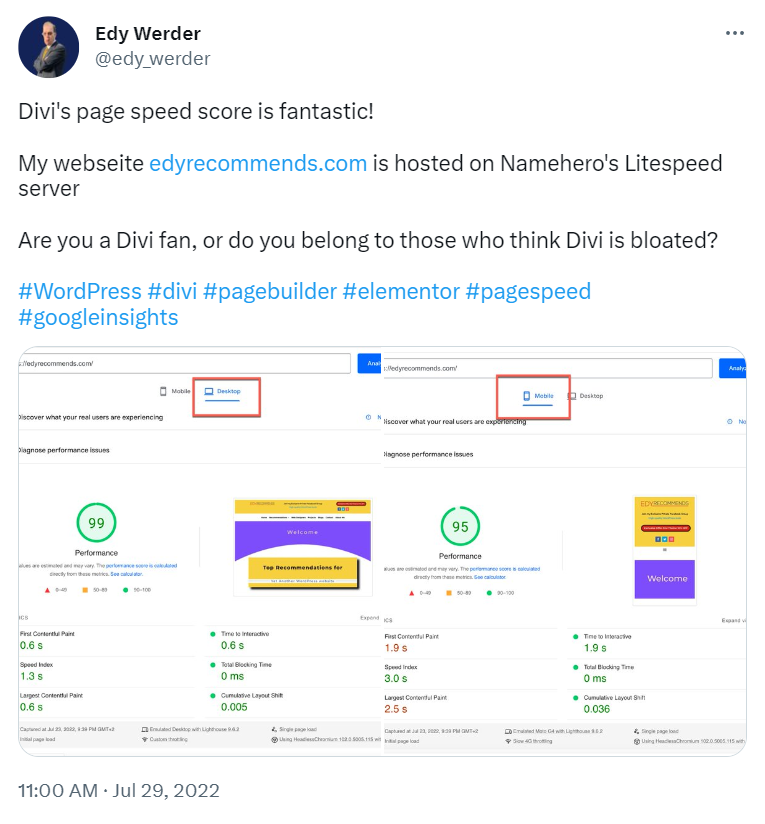
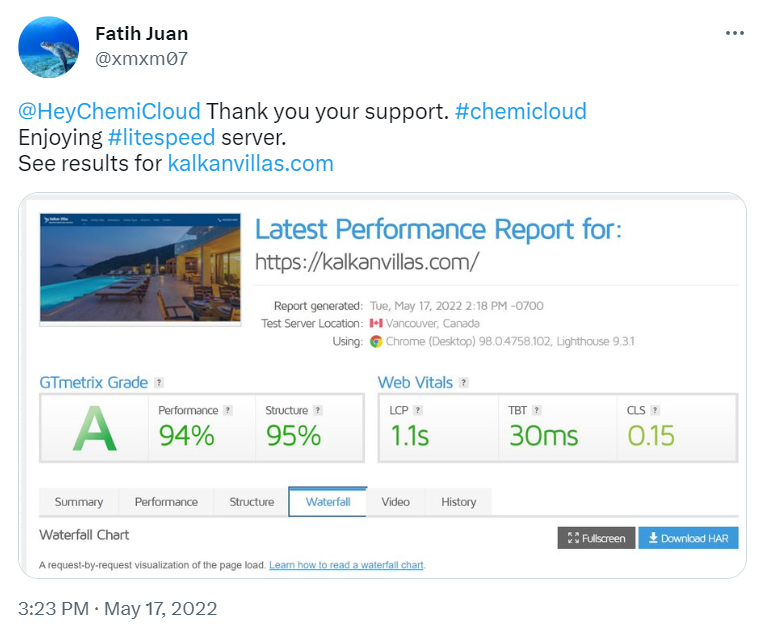
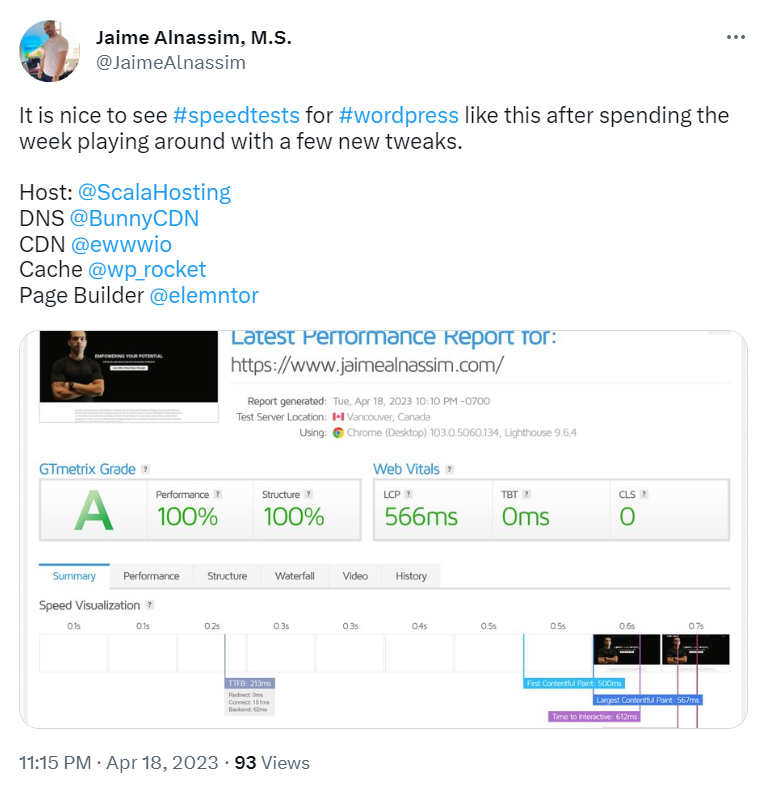


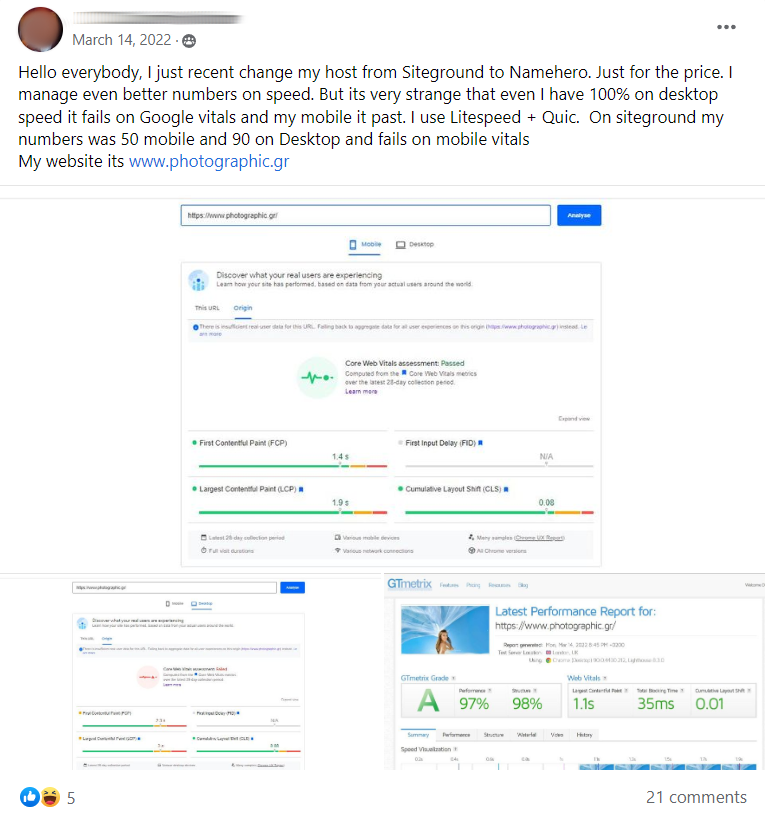




The problem with most shared LiteSpeed hosts (like Hostinger, GreenGeeks, and WPX) is they use slower SATA SSDs and less resources like cores/RAM which results in forced upgrades from high usage. They have a history of poor downtimes/support, and aren’t reliable with incidents like WPX’s global outage, A2’s ransomware attack, and scam reports on Hostinger/GreenGeeks. WPX isn’t ideal for dynamic/international sites (they literally say they target a TTFB of <400ms) which has a lot to do with their limited data centers and no full page caching on the CDN (XDN). A2 Hosting’s LiteSpeed plans would be a decent option if they just had better uptimes/support.
| Hostinger Business WordPress Plan | GreenGeeks Pro Plan | WPX Business Plan | A2 Hosting Turbo Boost Plan | |
|---|---|---|---|---|
| Type | Shared | Shared | Shared | Shared |
| Cores/RAM | 2 cores/1.5GB | 3 cores/2GB | 1 core/1GB | 3 cores/3GB |
| Storage | “200GB” SATA | Unlimited SATA | 15GB SATA | Unlimited NVMe |
| Database | MariaDB | MariaDB | MariaDB | MariaDB |
| Object cache | Memcached | Memcached | x | Redis |
| Data centers | 8 | 4 | 3 | 4 |
| Server | LiteSpeed | LiteSpeed | LiteSpeed | LiteSpeed |
| Cache plugin | LiteSpeed Cache | LiteSpeed Cache | W3 Total Cache | LiteSpeed Cache |
| CDN | QUIC.cloud | QUIC.cloud | XDN | QUIC.cloud |
| CDN locations | 81 | 81 | 36 | 81 |
| Full page caching | ✓ | ✓ | x | ✓ |
| Control panel | hPanel | cPanel | WPX Panel | cPanel |
| Email storage | 1GB | 10GB | Not listed but frequent issues | Adjustable |
| Inodes | 600,000 | 400,000 | At discretion | 600,000 |
| Incidents | Downtimes, scams, fake reviews, bad poll | Scam reports (unable to cancel service), CPU issues | Global outage (no redundancy system) | Ransomware attack, frequent downtimes |
| Migrations | Unlimited (but often makes mistakes) | 1 free | 5 free | Unlimited |
| Support | F | B | B | B |
| TrustPilot rating | 4.6/5 (fake) | 4.2/5 | 4.9/5 | 4.3/5 |
| Monthly price | $3.99 (1-4 years) | $4.99 (1 year) | $20.83 (1 year) | $6.99 (1 or 3 years) |
| Renewals | $8.99-$14.99 | $15.95 | $20.83 | $22.99 |
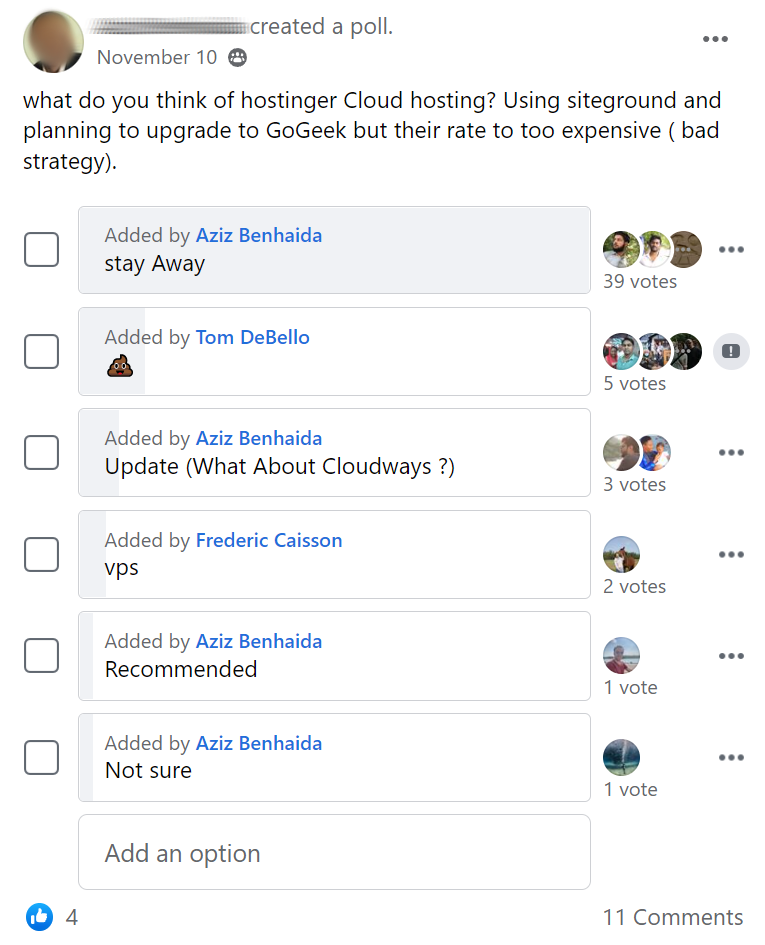
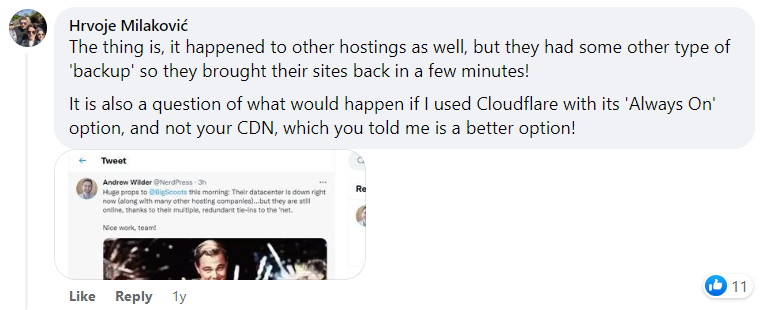

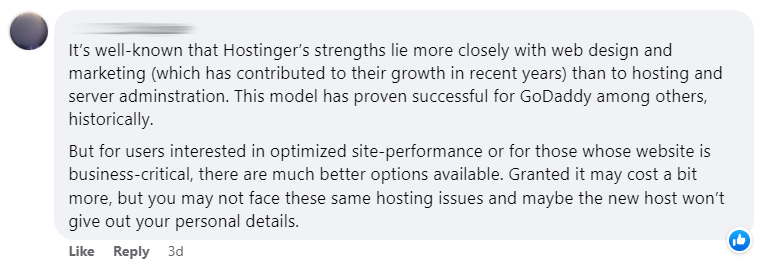


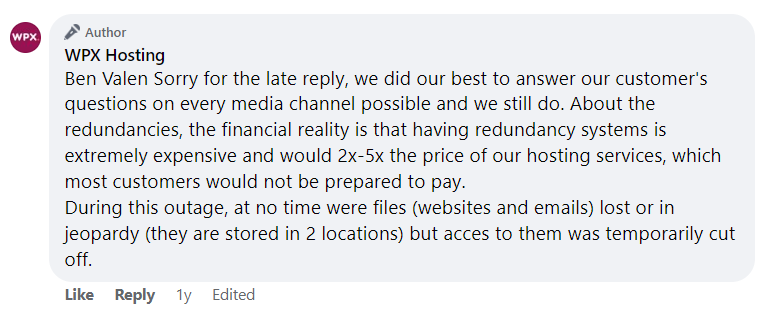
Did I Miss Anything?
I’m always looking to improve my tutorials and will listen to any suggestions you have in the comments. Otherwise if you liked my LiteSpeed Cache guide, I would appreciate you sharing it!
Cheers,
Tom

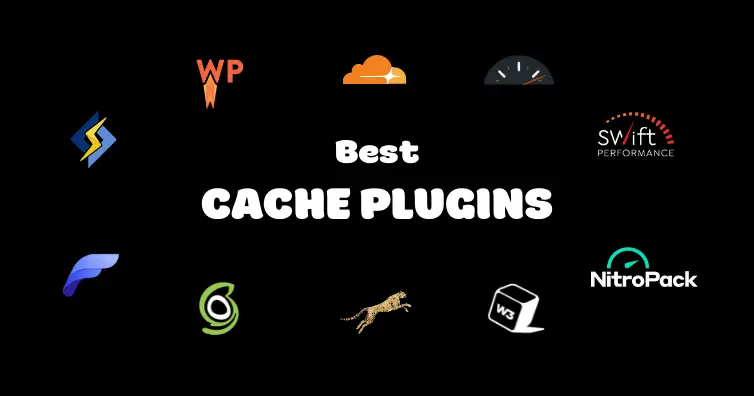
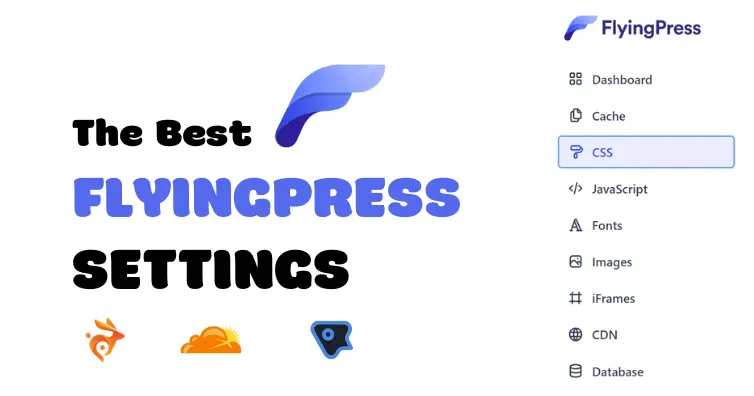
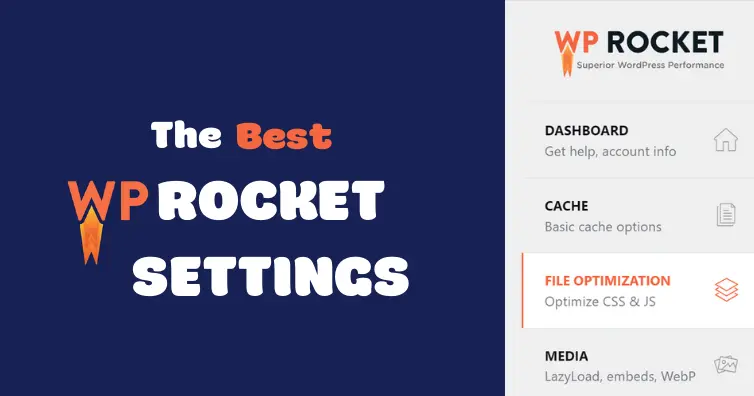

Dear Tom Dupuis,
thank you for your great guide to LiteSpeed and QUIC.cloud
I setted the CDN as you suggested, but I have a problem after just two days:
“Used over 80% of your CDN bandwidth allotted
Once you are over the limit, your site will bypass QUIC.cloud for the remainder of the month.”
I have 200 credits, so not so bad, but I need more probably. Maybe I made a mistake and I can change setting.
I am looking forward to hearing back from you,
Giovan Giuseppe Ferrandino
Hi Giovan,
See here where it says “because free quota refreshes on the 1st of every month, there is often a heavier-than-normal load on QUIC.cloud’s Online Services nodes at that time. In order to more fairly distribute the availability of Online Services, we may from time-to-time enable daily usage limits.” Since you just set it up, there may have been a heavier load than normal. That’s my guess.
Hey Tom,
thanks for this guide.
I have question about installed Redis Object Cache plugin by Rocket.net and LiteSpeed Cache setting for Object cache. I suppose that Object Cache in LiteSpeed must be disable.
Is this guide more general, or can I use it as it is for Rocket web hosting (with regard to their CDN etc.), please?
Thank you for your work!
Hey Pavel,
Rocket.net uses LiteSpeed for PHP processing, but they don’t use LiteSpeed servers (it’s a combination of Apache + Nginx). So if you’re using LiteSpeed Cache with them, you won’t be able to use LiteSpeed Cache’s “Exclusive Features” listed on the plugin page which yes, I assume is why the object cache setting would be disabled. I only recommend using LiteSpeed Cache if you’re on a LiteSpeed server, then FlyingPress in all other cases. Same setup I use… Rocket.net (with CF Enterprise) + FlyingPress, then if you need an asset unloading plugin, you can use Perfmatters or a free plugin like Asset CleanUp.
Hope that clarifies everything but lmk if you have other questions.